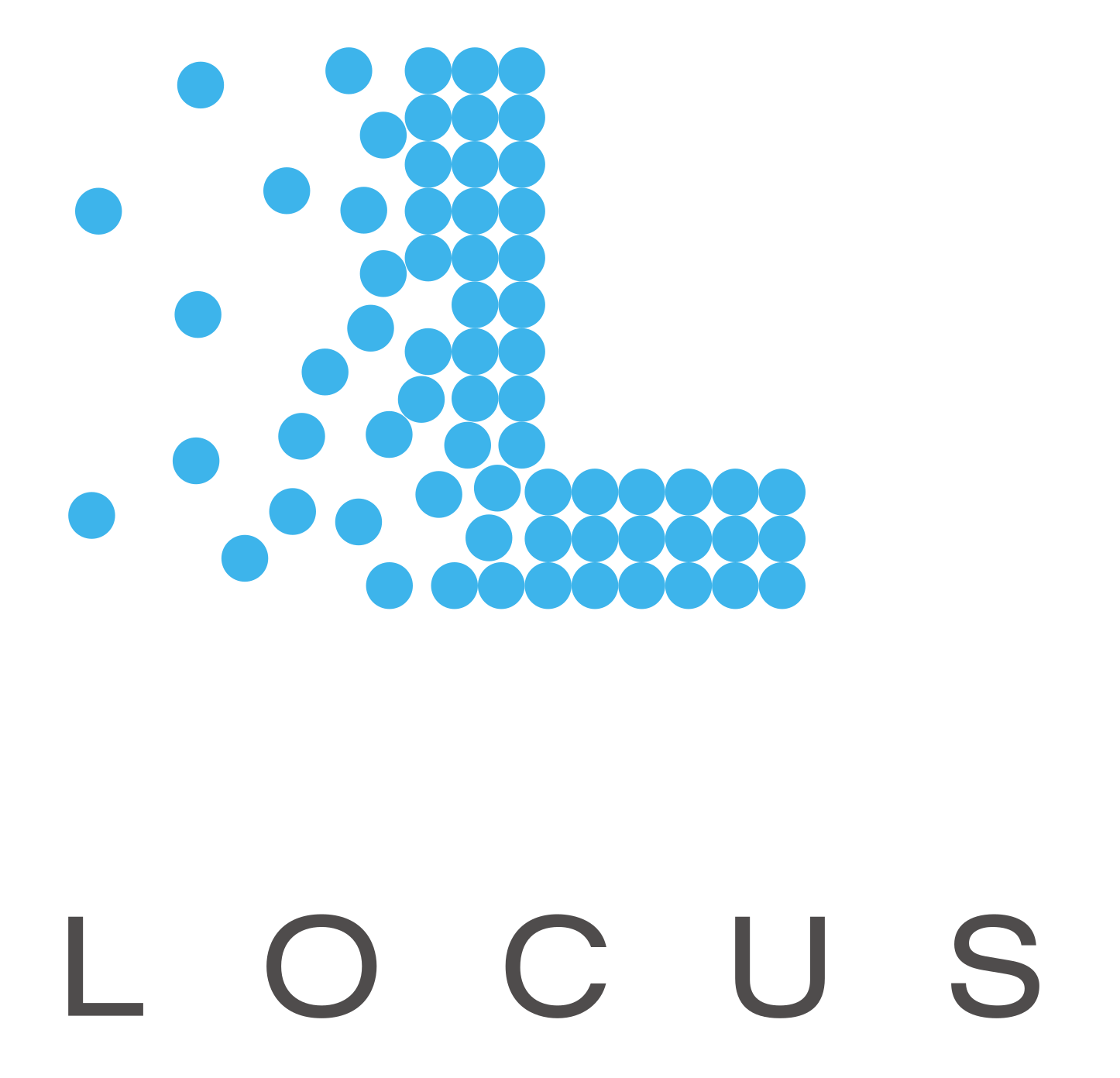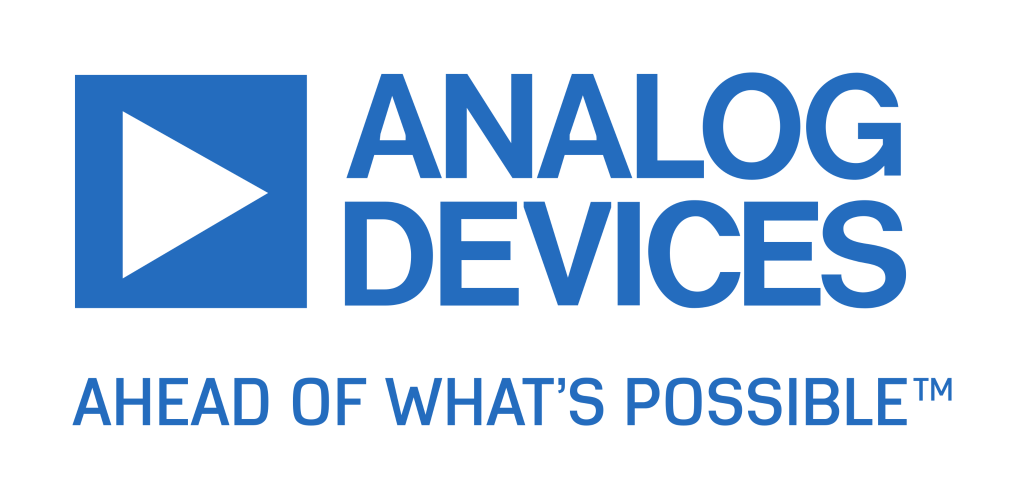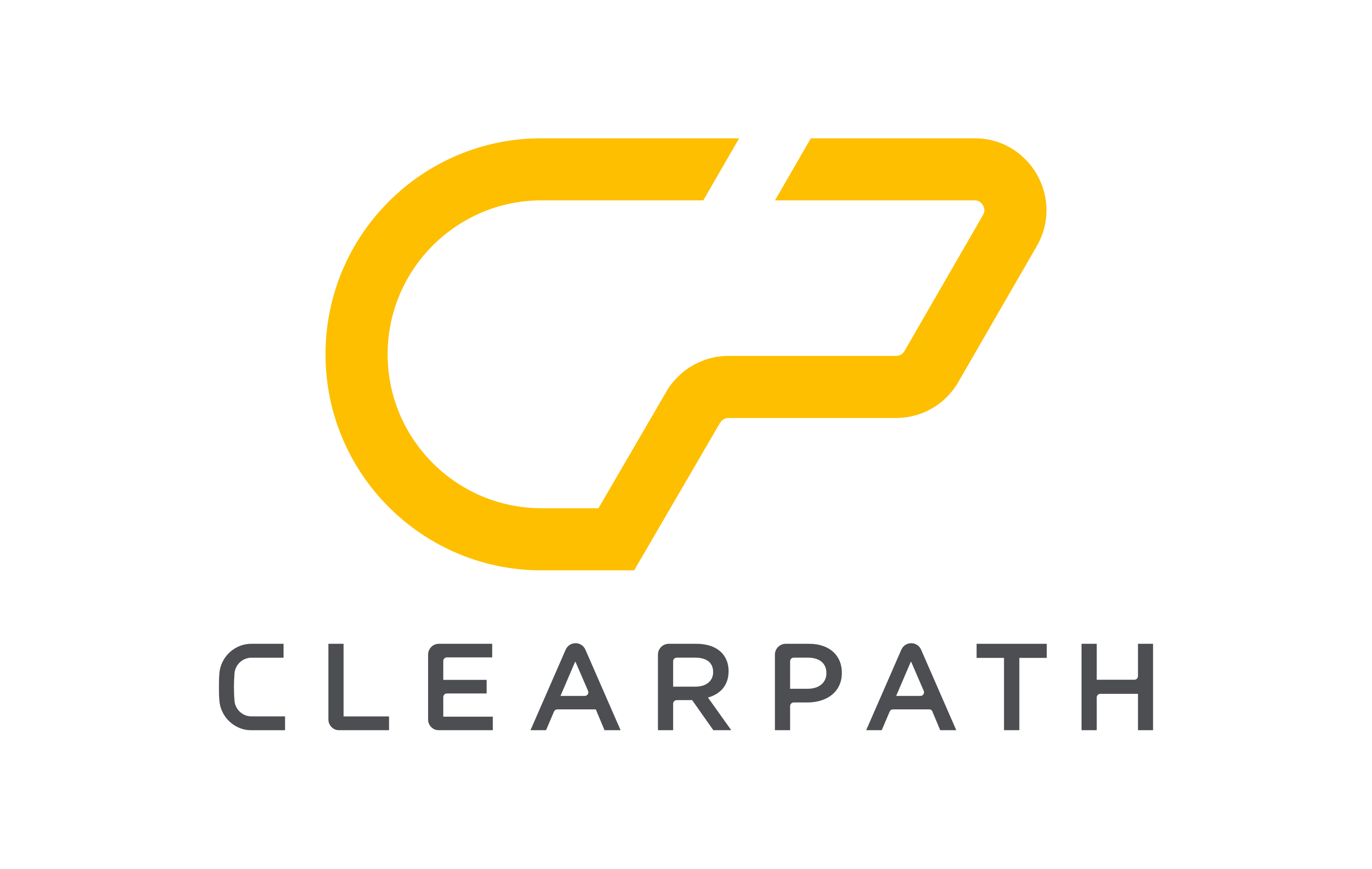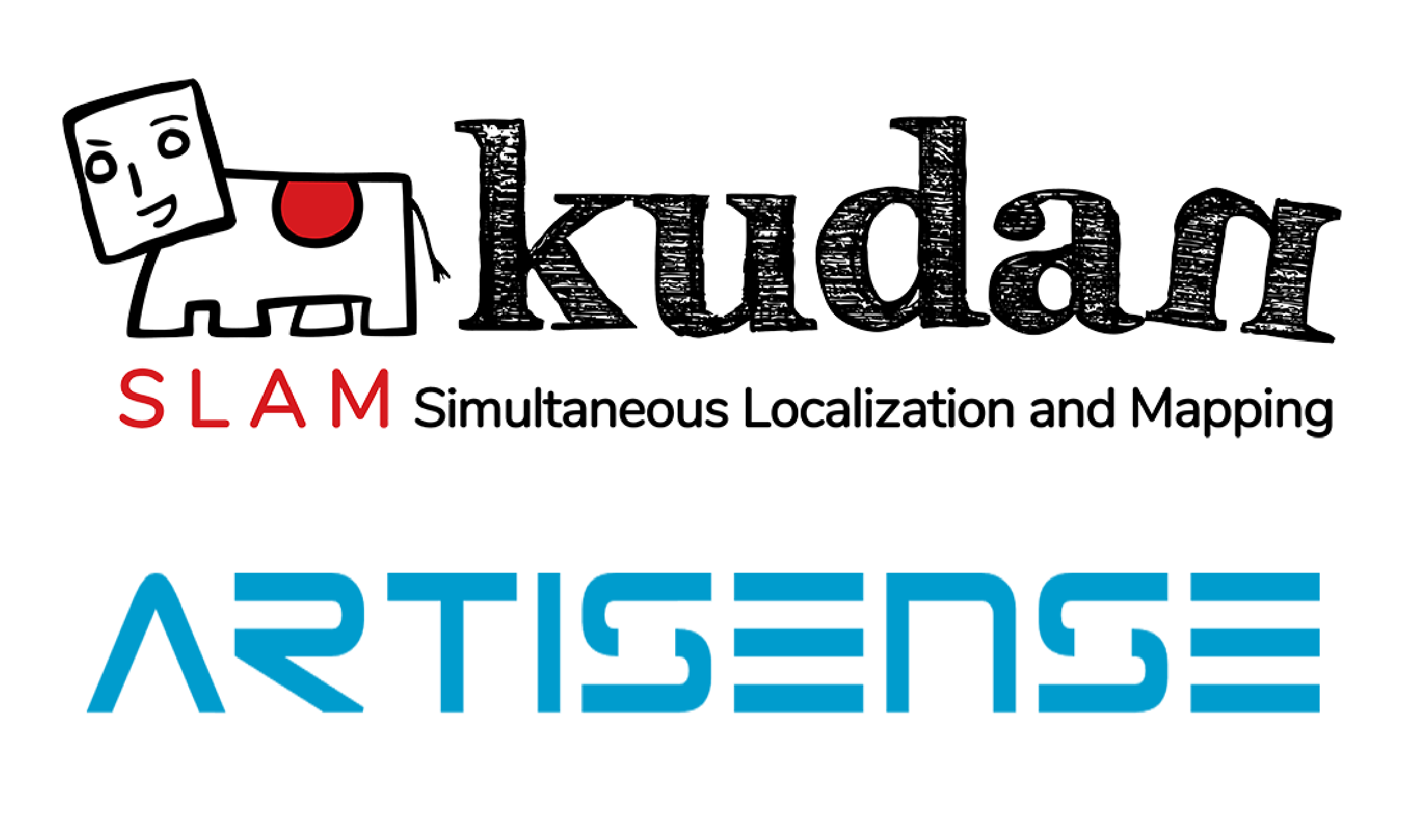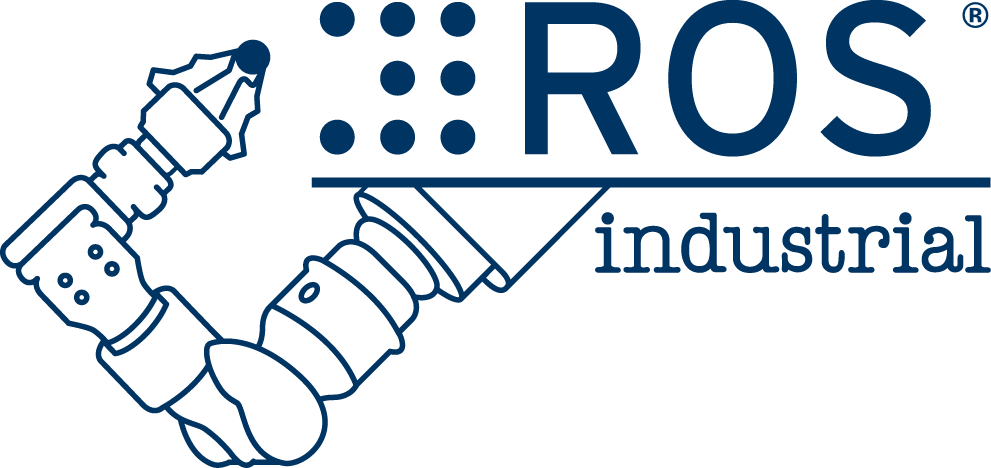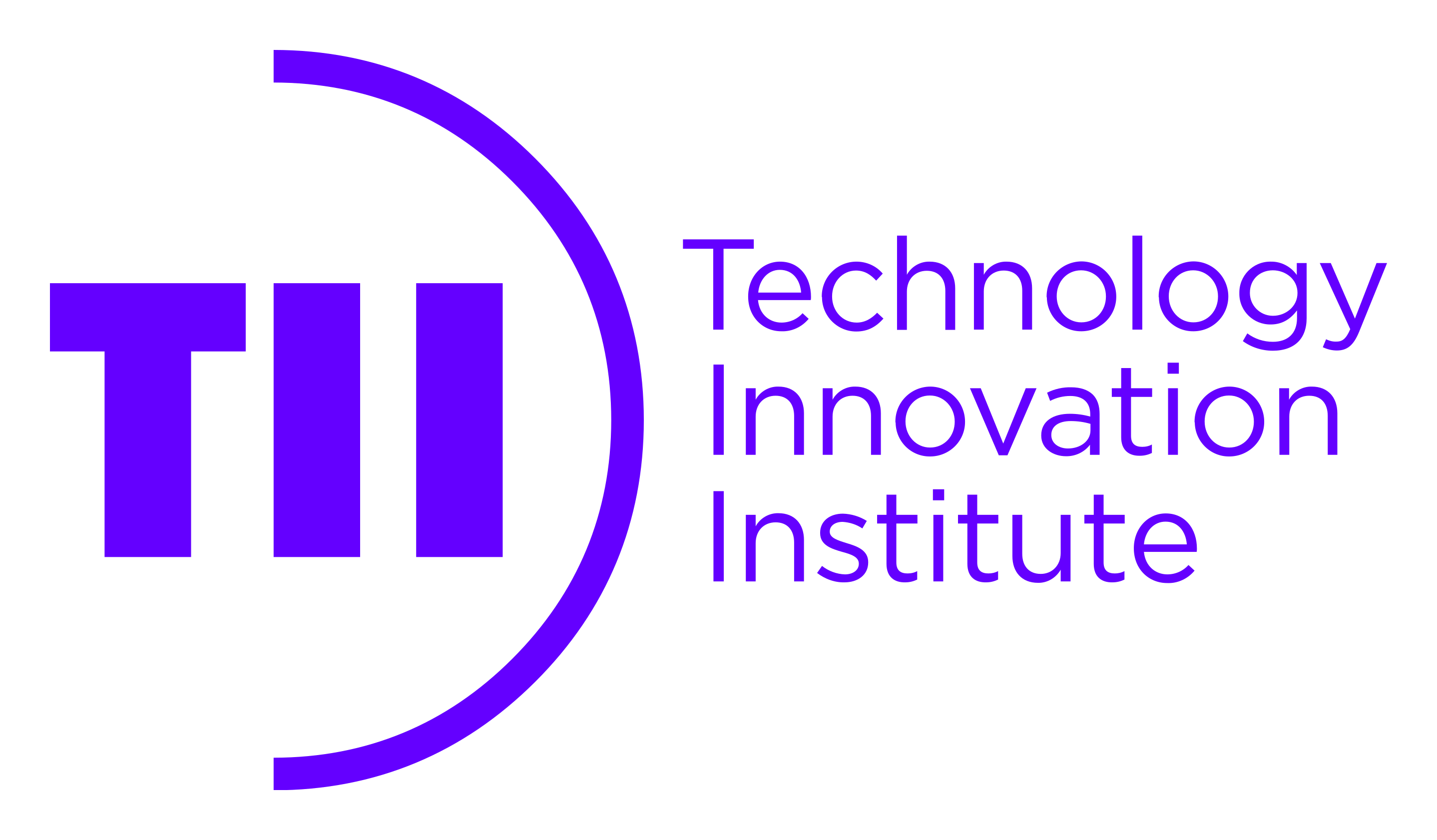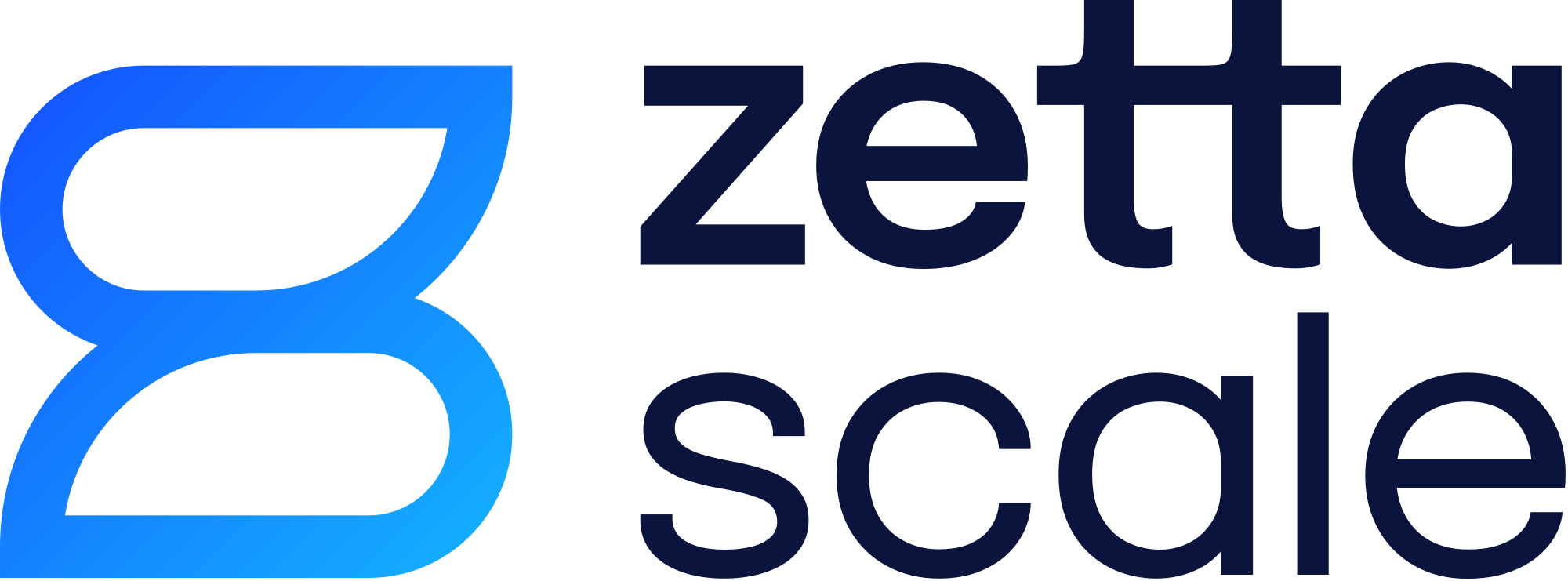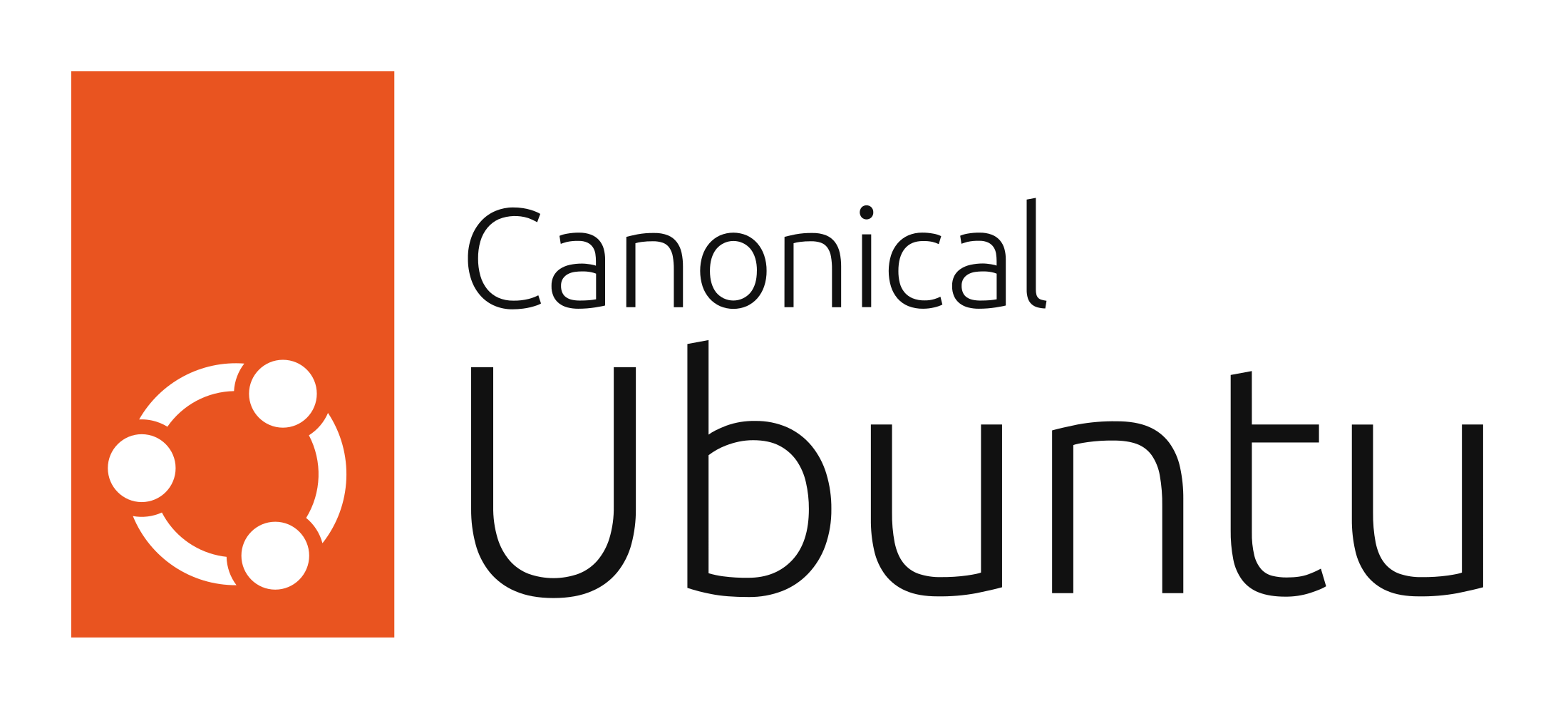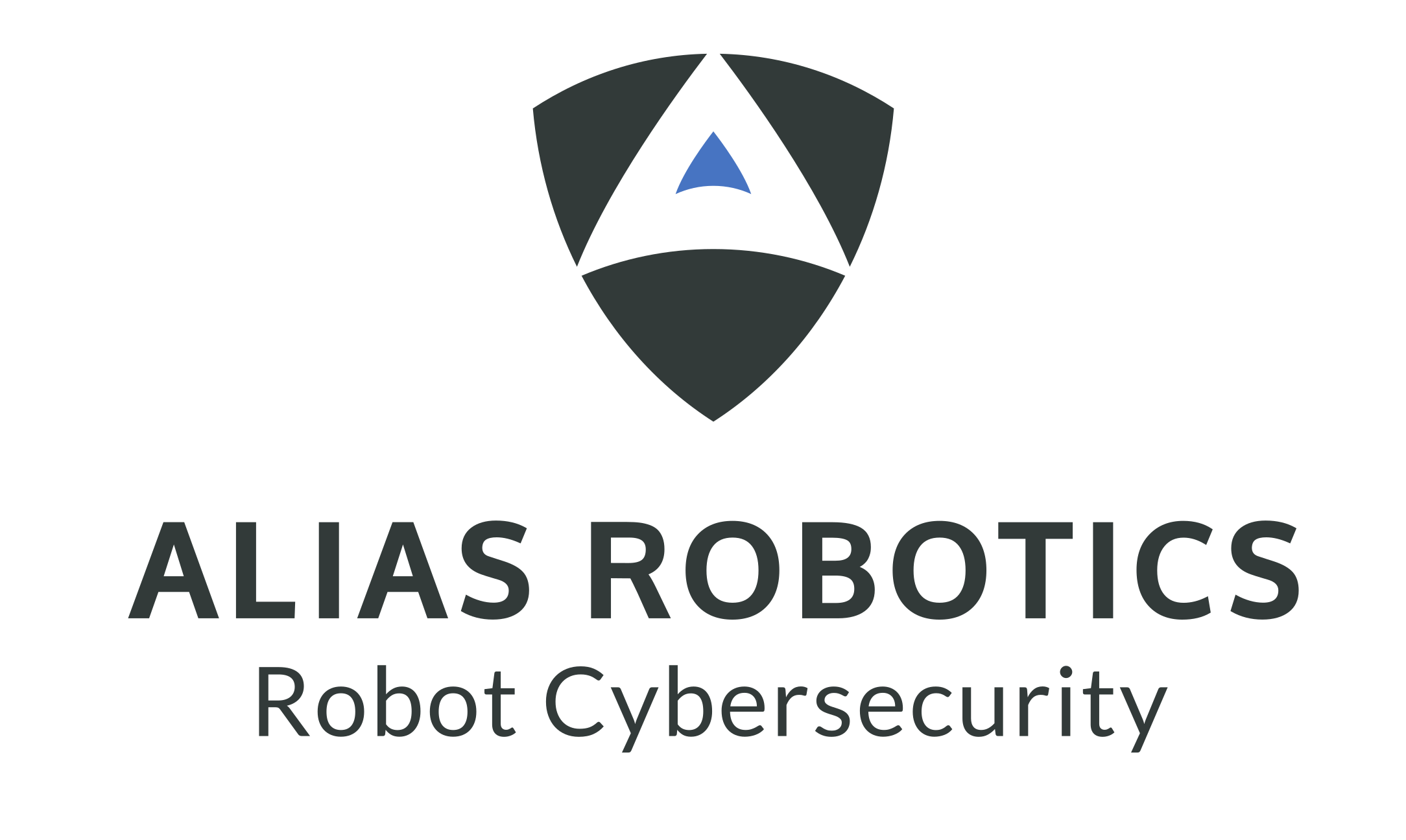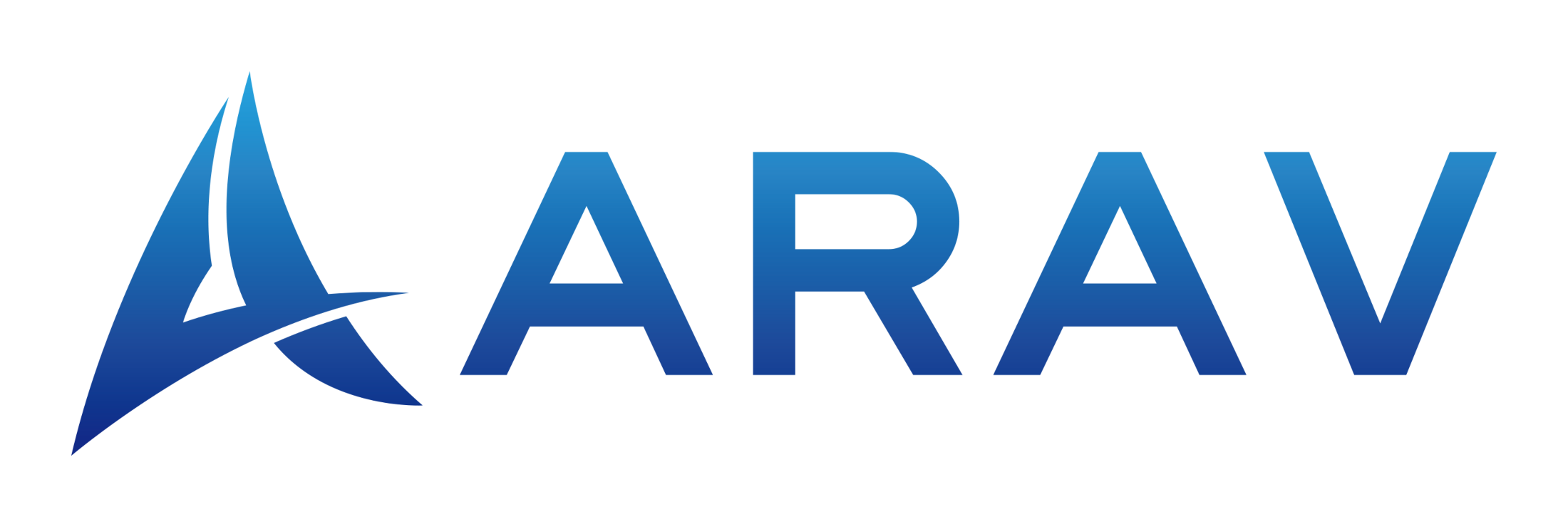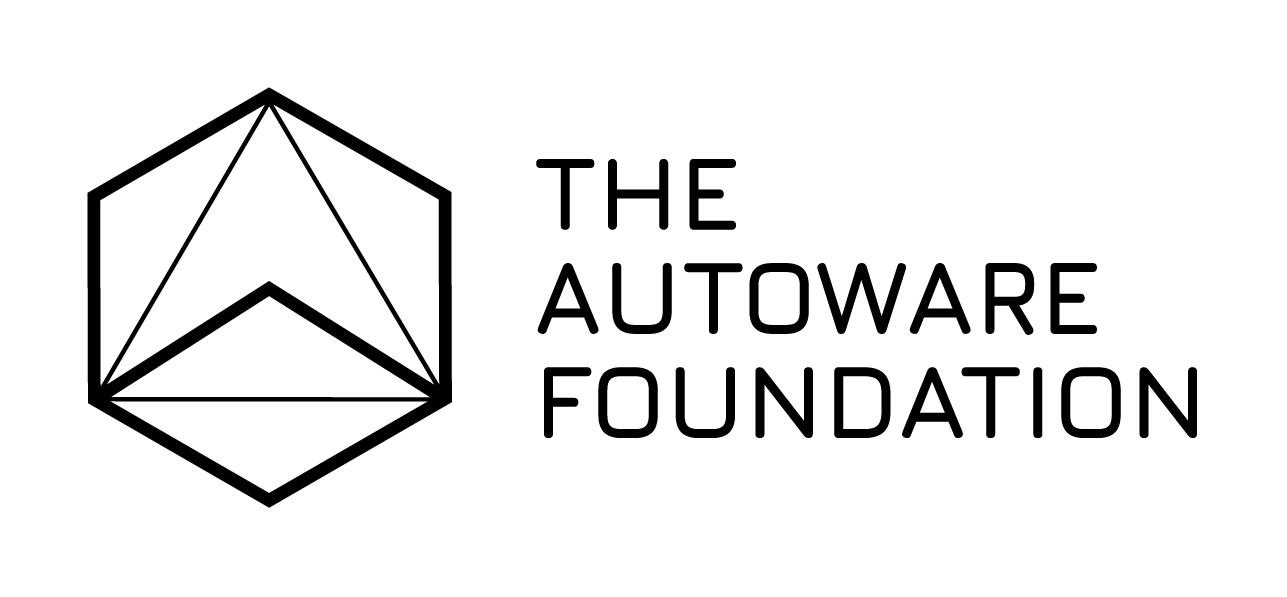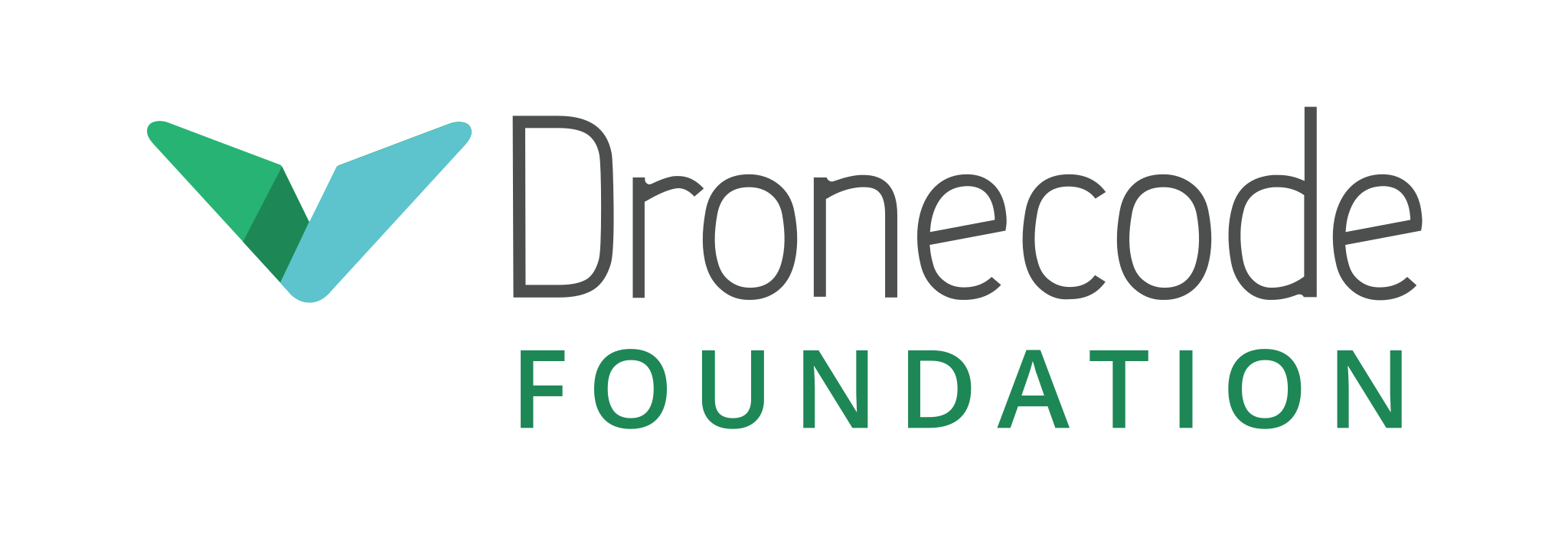- Recordings of all ROSCon talks are now available for free thanks to our Video sponsor AMD.
Attempting to load ROSCon Archive Listings.
ROSCon 2022 is a Wrap!

ROSCon 2022 is a wrap! We want to thank all 801 attendees from 38 countries, our speakers, organizers, sponsors, and the Meet Green team!
Join us for ROSCon 2023 in New Orleans, Louisiana on October 18th-20th, 2023!
ROSCon will happen October 19th - October 21st, 2022!
ROSCon 2022
ROSCon 2022 will be held at the Kyoto International Conference Center in Kyoto, Japan on October 19th through the 21st, immediately before IROS 2022. ROSCon 2022 is a chance for ROS developers of all levels, beginner to expert, to spend an extraordinary two days learning from and networking with the ROS community. Get tips and tricks from experts and meet and share ideas with fellow developers.
ROSCon is a developers conference, in the model of PyCon and BoostCon. Following the success of our past events, this year’s ROSCon will be our eleventh ROSCon and held in Kyoto, Japan. Similar to previous years, the two-day program will comprise technical talks and tutorials that will introduce you to new tools and libraries, as well as teach you more about the ones you already know. The bulk of the program will be 10-30 minute presentations (some may be longer or shorter).
We aim for ROSCon to represent the entire ROS community, which is global and diverse. Whoever you are, whatever you do, and wherever you do it, if you’re interested in ROS, then we want you to join us at ROSCon. We encourage women, members of minority groups, and members of other under-represented groups to attend ROSCon. We expect all attendees to follow our code of conduct.
The ROSCon planning committee acknowledges that the barriers to attendance for traditionally under-represented groups may be many and varied, and we are striving throughout the planning process to make the event as inclusive and accessible as possible. This year we are proud to continue the ROSCon Diversity Scholarship to help make ROSCon 2022 more representative of the global ROS community.
We also welcome suggestions for what else we can do to encourage more participation. Contact us if you have ideas that you’d like to share.
If you don’t want to make a formal presentation, you should still bring your new project or idea to ROSCon and present it in a lightning talk.
There will be an opportunity to give a lightning talk at ROSCon. These are 2-3 minute talks, one session each day (3 minutes in the past but this may be reducing to 2.5 or 2 minutes this year). We expect to have many more people who want to present than slots are available. For fair access there will be a lottery for requesting to give a lightning talk.
Talks from 2016 can be seen in this blog post or browse the recordings from past years.
There will also be open space for impromptu hacking sessions and informal presentations.
If you are looking for information on past ROSCons, including past programs, slides and videos of the presentations, see their separate websites.
Registration
Dates
Important dates to keep in mind for ROSCon 2022.
Call for Proposals circulated
March 7th, 2022
Workshop submission deadline
May 7th, 2022
Diversity Scholarship application deadline
June 12th, 2022
Proposal submission deadline
June 9th, 2022
Proposal acceptance notification
July 18th, 2022
Early registration deadline
September 19th, 2022
Late registration starts
October 20th, 2022
ROSCon 2022
October 19th - October 21st, 2022
Sponsors
Become a ROSCon 2022 sponsor! Check the sponsor prospectus for this year’s benefit packages. We are still taking sponsors for ROSCon2022, but unfortunately we have sold out of sponsor booths. We are presently offering discounted sponsorship packages that do not include booth space. Diversity scholarships, and other sponsorship add-on packages are still available.
Whether you’re ready to commit to a specific level or have a question or special request regarding the sponsorship program, please contact the executive committee.
A complete exhibit hall floor plan is available for download.
ROSCon 2022 Sponsors
Platinum Sponsor
Gold Sponsor
Silver Sponsor
Bronze Sponsor
Diversity Scholarship Sponsors
The following sponsors are supporting the ROSCon Diversity Program, which is designed to enable participation in ROSCon by those typically underrepresented in the robotics community to make the conference a more fulfilling experience for all attendees. To get a sense of the impact of prior years’ programs, which funded travel and lodging costs for dozens of scholars from around the world, we encourage you to watch this 2016 lightning talk from Ahmed Abdalla and Husam Salih, two students at the University of Khartoum in Sudan who talked about starting a robotics lab under extremely challenging conditions.
Video Sponsor
The video archive sponsorship supports the recording of the talks as well as the publication of the video archives online for the greater community.
attend
ROSCon 2022 Kyoto is Sold Out!
Unfortunately ROSCon 2022 has sold out and tickets are no longer for sale. We encourage you to watch the free live stream on the day of the event (a link will be available at the top of the page). If you have any questions, please contact Kate Wilson at Kate@meetgreen.com .
Getting to Kyoto
Flying to Japan
- Plan to fly into Narita (NRT) or Haneda (HND) airport, both located in Tokyo. From the airplane, follow signs for “Reception” to go through the quarantine process. To expedite the process, we recommend you use the MySOS app. Have it ready to present to staff as you go through a multi-step workflow in which you receive and then later hand back a couple of documents.
- From quarantine, proceed to immigration. Again, to expedite the process, we recommend you pre-register with Visit Japan Web. Have your QR code ready to present to staff.
- From imimigration, proceed to customs (if you pre-registered with Visit Japan Web, you can again present your QR code at the Electronic Customs Declaration Gates.
- If you need to get cash (as some transit ticket machines only take cash), look for either an “International ATM” or a currency exchange machine/counter at the airport.
- Follow signs to the train station.
Getting from Tokyo Narita airport to Kyoto
- Recommended: Most trains in Tokyo and Kyoto use a card system to cover fares. One card option is the Suica IC card. Find a Welcome Suica machine and buy a Welcome Suica IC card, to be used later on local transit in Kyoto.
- Find a ticket machine for Narita Express (NEX). Follow on-screen instructions to select a trip to Kyoto Station comprising two legs: Narita Express and Shinkansen Nozomi (bullet train), connecting either in Tokyo Station or Shinagawa. Choose a class of service and whether to have a reserved seat. Pay cash for the trip.
- You should receive 3 tickets:
- Basic Fare covering the whole trip
- Limited Express for the Narita Express
- Super Express for the Shinkansen Nozomi
- This video shows the transfer from the Narita Express to the Shinkasen
- For Narita Express, use both the Basic Fare and the Limited Express tickets at the entry gates.
- For Shinkansen Nozomi, use both the Basic Fare and the Super Express tickets at the entry gates.
- Keep your tickets until you exit the train system.
- Total time elapsed from NRT to Kyoto Station: 3.5 hours. Cost: ¥17,400 (~US$129).
- Note: the Shinkansen has strict requirements on over sized luggage
Getting from Tokyo Haneda airport to Kyoto
- Recommended: Most trains in Tokyo and Kyoto use a card system to cover fares. One card option is the Suica IC card. Find a Welcome Suica machine and buy a Welcome Suica IC card, to be used later on local transit in Kyoto.
- Find a ticket machine and purchase a ticket for Keikyu Airport Line’s Rapid Limited Express Train as well as a Japan Rail Pass to be used for the Shinkasen bullet train. Take the Express Train to Shinagawa Station where you can transfer to the Shinkansen bullet train. It is best to take the Hikari train, it is the quickest and covered under the Japan Rail Pass. Note: if you have oversized luggage, it can be tricky so you can purchase a seat to accommodate.
- Total time elapsed from HND to Kyoto Station: 3 hours. Cost: ¥14,000 (~US$97).
- Getting from Kyoto Station to Kyoto International Conference Center
- You can move around Kyoto using their subway system with the Welcome Suica IC card. There are places to add more money onto these cards at each station. The Kyoto International Conference Center is located at stop K01 on the Karasuma Line and is 20-25 minutes from the
Getting from Kyoto Station to Kyoto International Conference Center

You can move around Kyoto using their subway system with the Welcome Suica IC card. There are places to add more money onto these cards at each station. The Kyoto International Conference Center is located at stop K01 on the Karasuma Line and is 20-25 minutes from the Kyoto Station.
Hotel Information
We have partnered with the JTB travel agency to provide attendees with conveniently located accommodations to suit various travel needs. To take advantage of these special low rates, rooms MUST be booked directly through the JTB booking form and are valid only from October 17-21, 2022. The listed price on the JTB booking form is per person, per night, including breakfast, service charge, and consumption tax. All options include a bathtub and toilet.
The Prince Kyoto Takaragaike
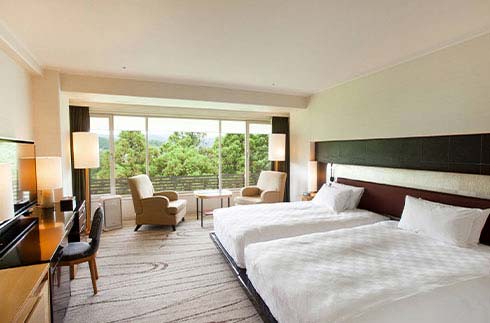
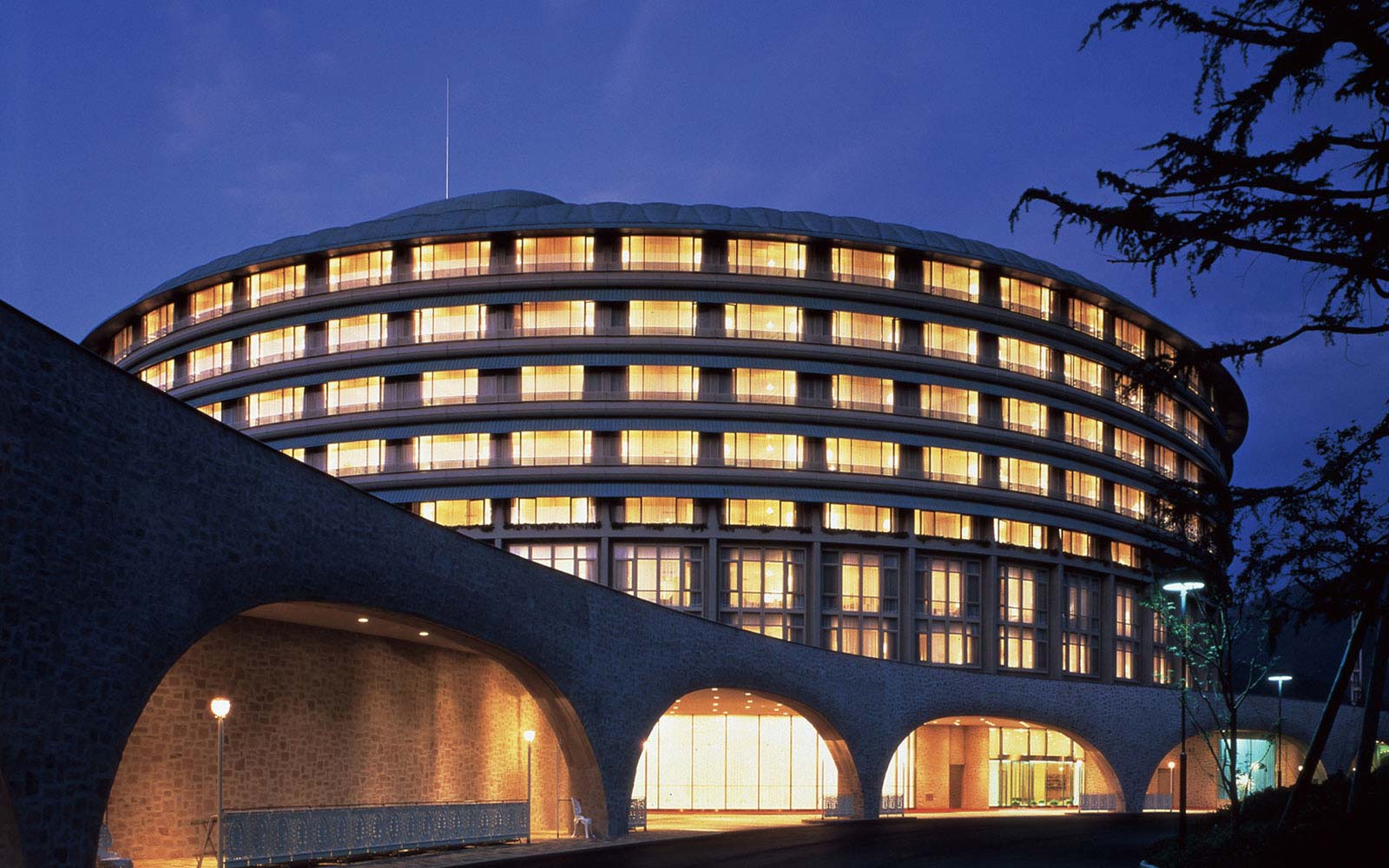
The Prince Kyoto Takaragaike is the only hotel within walking distance of the conference venue, the Kyoto International Conference Center. Rooms range in price from ¥16,920-¥30,420 and can be purchased from JTB Travel.
Karasuma Kyoto Hotel
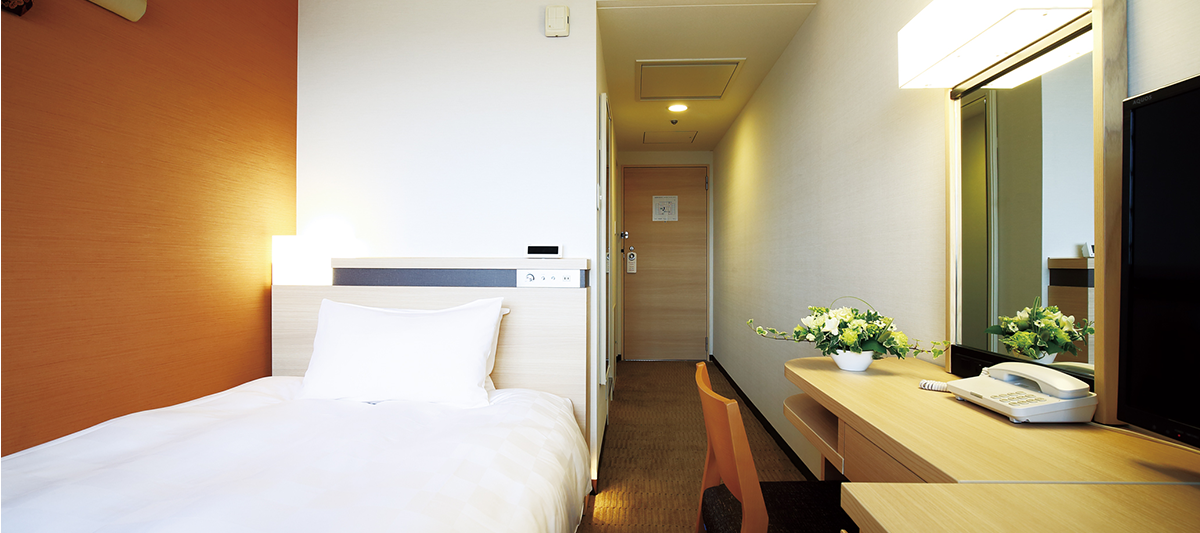
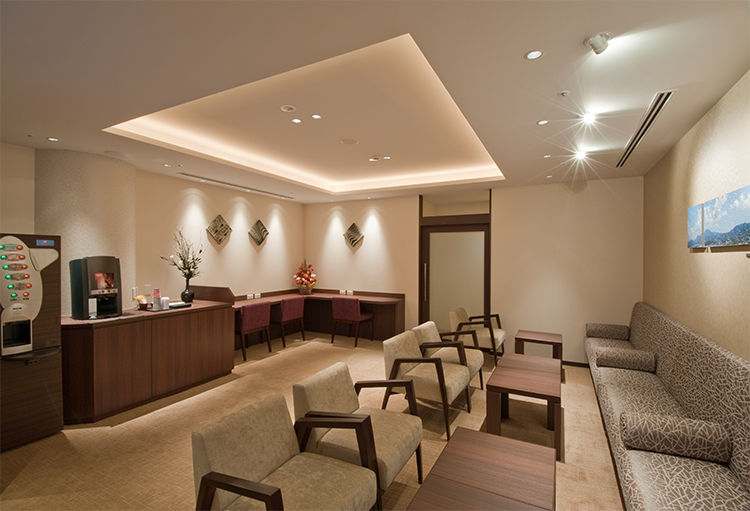
The Karasuma Kyoto Hotel is located in Central Kyoto, near the Kyoto Train Station and approximately 30 minutes by train to the conference venue. Rooms range in price from ¥10,100-¥15,60 and can be purchased from JTB Travel.
Mitsui Garden Hotel Kyoto Sanjo
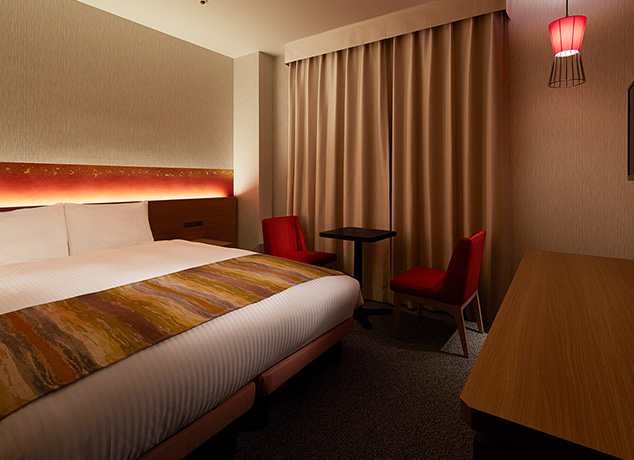
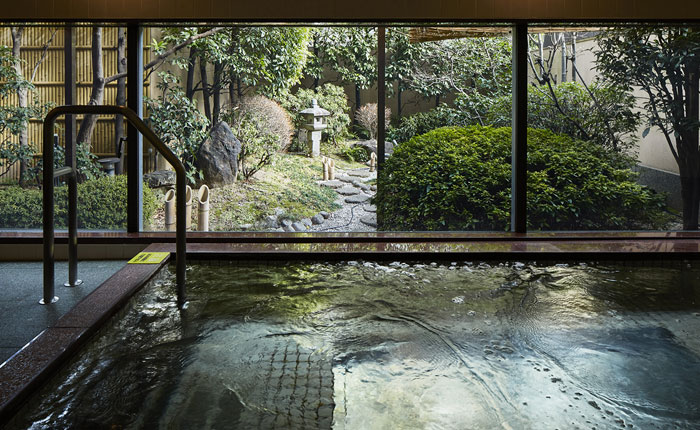
Mitsui Garden Hotel Kyoto Sanjo is located in Central Kyoto, near the Kyoto Train Station and approximately 30 minutes by train to the conference venue. Rooms range in price from ¥6,250-¥9,660 and can be purchased from JTB Travel.
ANA Crowne Plaza Kyoto
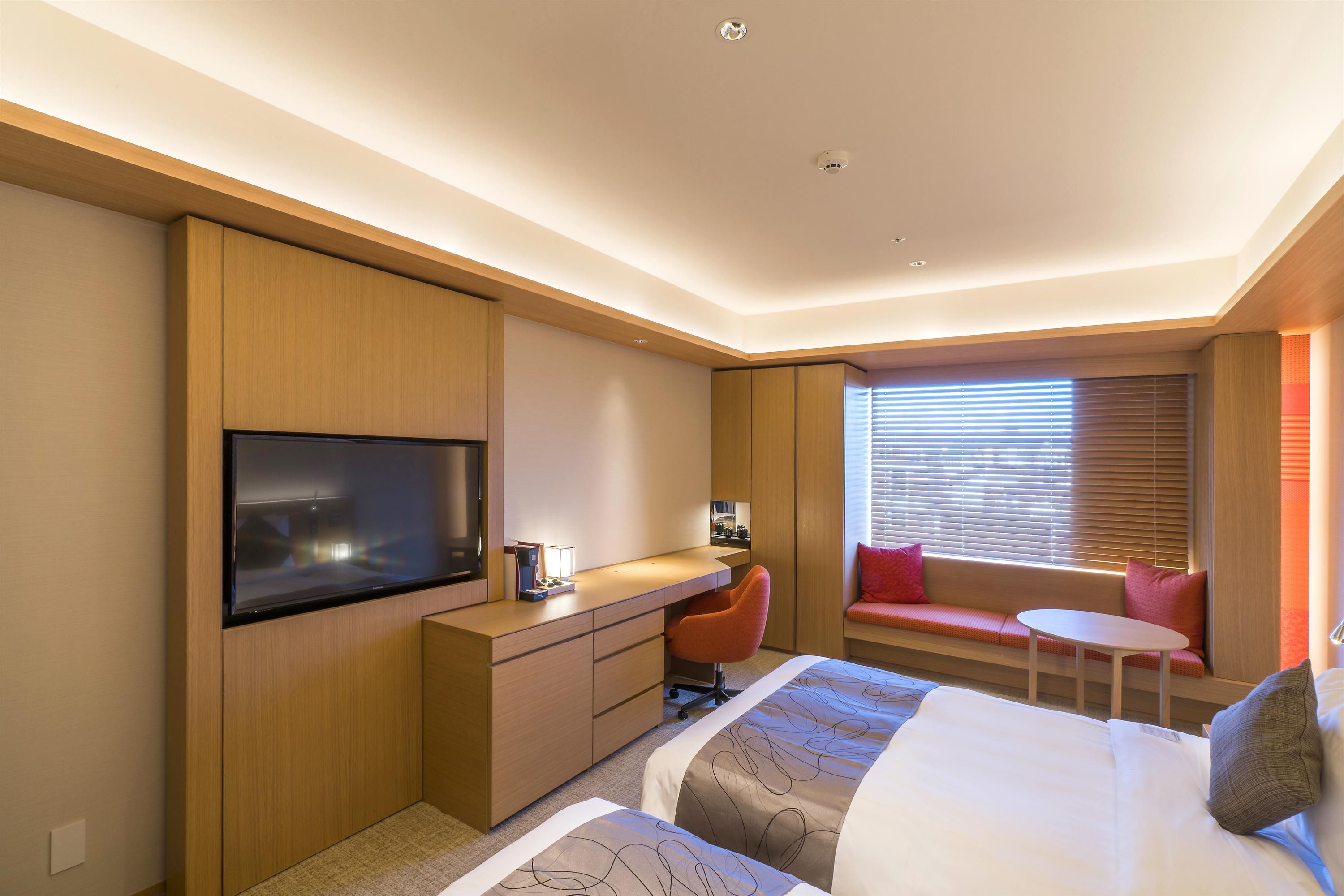

ANA Crowne Plaza Kyoto is located in Central Kyoto, near the Kyoto Train Station and approximately 30 minutes by train to the conference venue. Rooms range in price from ¥14,500-¥23,300 and can be purchased from JTB Travel.
Hotel Monterey Kyoto
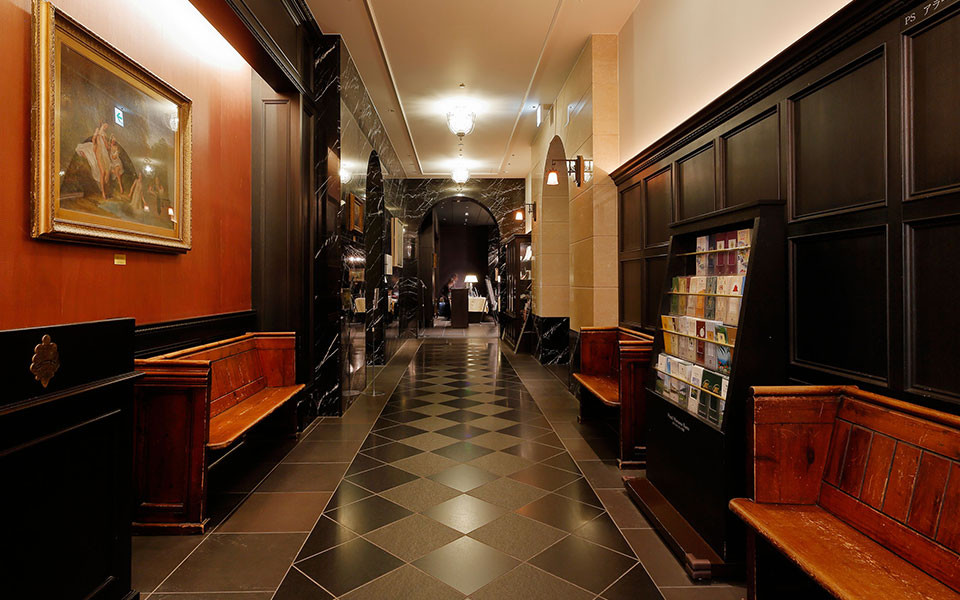
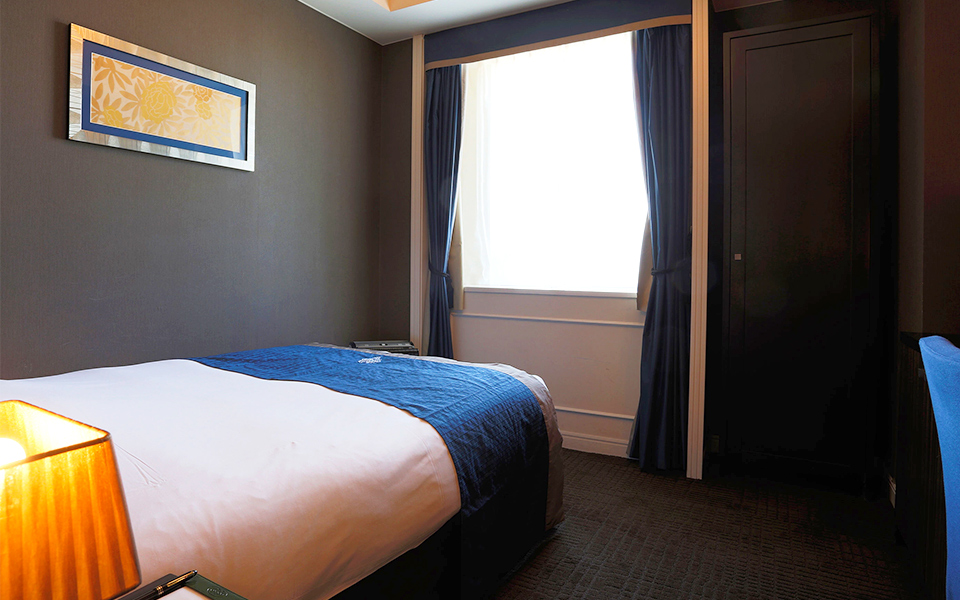
Hotel Monterey Kyoto is located in Central Kyoto, near the Kyoto Train Station and approximately 30 minutes by train to the conference venue. This hotel offers a women only floor. Rooms range in price from ¥9,000-¥14,500 and can be purchased from JTB Travel.
Mitsui Garden Hotel Kyoto Shijo
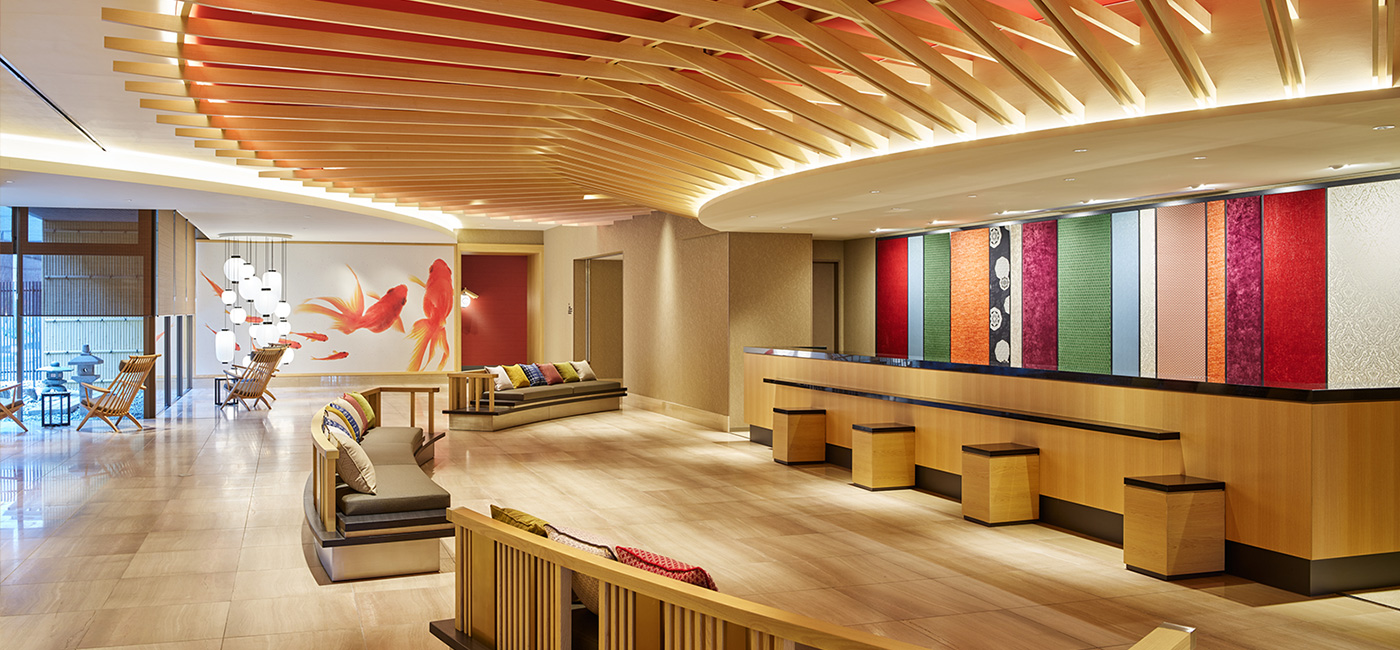
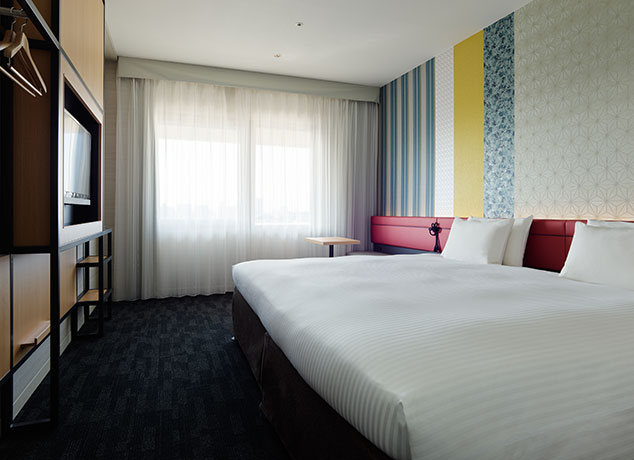
Mitsui Garden Hotel Kyoto Shijo is located in Central Kyoto, near the Kyoto Train Station and approximately 30 minutes by train to the conference venue. Rooms range in price from ¥6,030-¥9,110 and can be purchased from JTB Travel.
Hotel Comments and Requests
Specific hotel information can be obtained through our accommodation broker, JTB travel.
Their contact information is as follows:
JTB Corp. Western Japan MICE Branch
「ROSCon 2022 Kyoto」 Accommodation Desk
JTB Bldg. 6F, 2-1-25, Kyutaro-machi Chuo-ku Osaka 541-0056
TEL: +81-6-6210-5405/FAX: +81-6-6210-5423
E-Mail: westec_op1@jtb.com
Other Travel and Event Resources
Here are some other events and references that should make traveling in Japan much easier.
- Wiki Travel includes of great information wherever you are going:
- Community Restaurant Guide
- Community ROSCon Google Calendar
- Jidai Matsuri Festival (Saturday after ROSCon)
- Kyoto Tourism Website
- A Three Day Kyoto Itinerary
- A guide to Japanese Etiquette
- Helpful communication tips for those with dietary restrictions / food allergies
- Helpful Japan Transit Planner
- Unusual Attractions in Kyoto
Program
Facilities Map


Day 0 -- October 19th, 2022
Pre-conference Workshops
ROSCon Japan 2022
9:00 - 17:00 JST Lunch: 12:00 - 13:20 JST ROSCon JP OrganizersWebsite ROSCon JP is the official domestic ROSCon for Japan, held by the local ROS community with the support of Open Robotics. It provides an opportunity for ROS developers and users to spend a day together learning from and networking with each other. Following the success of past events, which were attended by over 200 people each, this year’s ROSCon JP in Kyoto will be our fourth event. The one-day program will comprise keynotes and technical talks that will introduce you to the local robotics scene in Japan. Although ROSCon JP is a Japanese-language event, we wish to take this opportunity to show the local ROS community’s activities to the global ROS community. To aid this, we will have live translation from Japanese to English for the entire program. If robotics activities in Japan interest you then join us in what promises to be a full day of exciting ROS-related knowledge exchange.
How to use ros2_control and spend more time with your application
9:00 - 17:00 JST Lunch: 12:00 - 13:20 JST Denis ŠtoglRicardo Tellez
(The Construct) Website ros2_control is a hardware-agnostic control framework with a focus on both real-time performance and sharing of controllers. The framework has become one of the main utility for abstracting hardware and low-level control for 3rd party solutions like `MoveIt2` and `Nav2` systems. The workshop provides a practical introduction to ros2_control, from creating a robot description, writing hardware drivers to configuring standard controllers for a mobile manipulator. Besides writing controllers for ros2_control, some of the hot-new features, like controller chaining, will be shown on a quadruped. Furthermore, you will get introduced to concepts like modular reuse of hardware drivers, multi-robot architectures and parameters injection for controllers. Besides the work in the simulation, participants should get the opportunity to test their code real robots controlled remotely.
Open-Source Interoperability with Hands-On Application of Open-RMF
9:00 - 17:00 JST Lunch: 12:00 - 13:20 JST Matthew Festo, Dr. Morgan Quigley, Dr. Michael Grey, Yadunund Vijay, Aaron Chong(Open Robotics) Website In this workshop, you will be introduced to the benefits, capabilities, architecture, and source code of Open-RMF (www.open-rmf.org), an open source interoperability enabling platform. Specifically, you will learn;
(1) the requirements, benefits and steps to build multi-fleet traffic maps,
(2) how to generate building simulation models from traffic map files, and then simulate fleets of robots in Gazebo using those models,
(3) how to use existing software adapters, or develop new adapters, to integrate your mobile robot fleets, doors, elevators and workcells, and
(4) how to visualize and and control your Open-RMF assets using RMF Web.
Meet Mini Pupper, the miniature, legged, ROS robot
9:00 - 17:00 JST Lunch: 12:00 - 13:20 JST Sachin Guruswamy (Luxonis)Daisuke Sato,
Nisshan,
Masahito Sakaguchi,
Afreez Gan (MangDang) Website
Mini Pupper is the ROS, open-source robot dog platform that supports ROS SLAM, Navigation, and OpenCV AI features with Lidar, camera sensors at a affordable price.
Mini Pupper will make robotics easier for schools, homeschool families, enthusiasts and beyond. In this workshop, you can not only play Mini Pupper but also learn how we design it. This is a hands-on workshop. Bring your laptop and let's enjoy the quadruped robot together.
This workshop will provide hands-on lessons covering the following topic:
(1) Mini Pupper ROS simulation.
(2) Object following using vision-based deep learning.
(3) Using the OpenCV OAK-D-Lite 3D camera AI features
(4) Using scratch with Mini Pupper
Day One, October 20th, 2022
All times are Japan Standard Time (UTC+9)
9:00 JST
9:10 JST
ROS-based Image Guidance Navigation System for Minimally Invasive Liver Surgery
Plenary I
Reuben Docea (Deutsches Krebsforschungszentrum)
Jan Müller (Technische Universität Dresden, Germany)
New Hall
Minimally Invasive Surgery (MIS), also known as keyhole surgery, is increasingly used for removing tumours from the liver - a procedure called Laparoscopic Liver Resection. However, this is more challenging to perform as orientation is considerably harder than in open surgery. To tackle this, we designed a prototype Image Guidance Navigation System. This system aids the surgeon with Augmented Reality visualisations of structures such as tumours and blood vessels. ROS’ role in our project was essential, comfortably enabling distributed computing, easy development and integration of new methods such as endoscope-specific calibration and pointcloud-based 3D reconstruction, and simplifying multi-department collaboration.
🌐 More Info
📹 Watch
🗒️ Slides
9:50 JST
ROS for Human-Robot Interaction: status and next steps
Plenary I
Séverin Lemaignan (PAL Robotics)
New Hall
ROS is widely used in the context of human-robot interactions (HRI), even though the lack of established standard hampers code reusability, experiment replicability, and general sharing of knowledge. The ROS4HRI framework has been recently introduced to address this issue. It specifies a consistent set of interfaces and conventions (currently under review as the ROS REP-155 "ROS for HRI"), as well as a reference open-source implementation, already available for testing. During the talk, we will present this framework and its modeling choices, as well as give a deep-dive into its open-source reference implementation.
🌐 More Info
📹 Watch
🗒️ Slides
10:10 JST
Wearable ROS: Development of wearable robot system using ROS 2
Plenary I
Hwiwon Seo (Angel Robotics)
Minsoo Song (Angel Robotics)
New Hall
The more the industry of wearable robots grows and diversifies, the more the demand of a unified software framework increases for efficient development. We applied ROS 2 to develop a wearable robot system. Deploying it to our product, the lower limb rehabilitation wearable robot Angel Legs, we discovered our system could become a framework for wearable robots. We introduce our new wearable robot system and how ROS 2 effectively facilitated development. Also, we show how our system can be an open-source framework for wearable robot development, letting other developers participate in efficiently.
📹 Watch
🗒️ Slides
10:30 JST
Building ROS 2 enabled Android apps with C++
Plenary I
Shane Loretz (Open Robotics)
New Hall
Are you a C++ developer? You can create an Android app using ROS 2 without writing a single line of Java or Kotlin. This talk will introduce you to android_ros, an open source Android app built using only CMake, rclcpp, and the Android NDK. Furthermore, it will show you the tools you need to build your own ROS 2 enabled Android app.
🌐 More Info
📹 Watch
🗒️ Slides
10:40 JST
Break
New Hall
11:10 JST
What's Past the End? The Future of ROS One
Plenary II
Michael Görner (Universität Hamburg)
New Hall
Open Robotics's infrastructure supports ROS One up to Ubuntu 20.04 and newer operating system releases can leave the impression ROS One might become unusable in the near future. This is not the case though. Instead, the effort of packaging and distributing ROS packages simply reverts to the traditional open source model where individual distribution maintainers take charge. To support such efforts in current software environments, the ROS-O initiative bundles new upstream repositories for unmaintained ROS packages wherever required patches are not merged into their previous repositories anymore.
🌐 More Info
📹 Watch
🗒️ Slides
11:20 JST
How to SLAM the gender gaps of women in Robotics?
Plenary II
Anahí Belén Torres (Ekumen)
New Hall
How a gender perspective could reduce the gap of women in Robotics. This is a multifaceted approach to a complex problem, exploring the role of stereotypes in engineering fields. Despite a high female representation in different fields/areas, this does not necessarily mean that there is a special focus on gender issues. This is why it is so important to amplify our collective voices and calls to advocate for greater diversity, equity, and inclusion in the fields of robotics. There will be many unresolved challenges and there will be unresolved needs if everything continues in the same way.
🌐 More Info
📹 Watch
🗒️ Slides
11:30 JST
Teaching ROS with JupyterLab
Plenary II
Wolf Vollprecht (QuantStack)
Isabel Paredes (QuantStack)
New Hall
One of the major hurdles in the teaching of ROS is the installation process. For complete beginners, navigating through setup instructions and troubleshooting any errors that come up can be very overwhelming. To overcome this, we offer a simpler alternative with JupyterLab. With JupyterLab and a few additional extensions, students can have full access to ROS. Educational institutions can add ROS environments to their existing JupyterHub clusters to make it even more accessible for students. In this talk, we present an alternative way of teaching ROS using JupyterLab where the only requirement is access to a web browser.
📹 Watch
🗒️ Slides
11:40 JST
Panel: The ROS 2 Developer Experience
Plenary II
Moderator: Tom Moore (Locus Robotics)
New Hall
Like ROS 1, ROS 2 has enabled organisations to rapidly develop a broad range of robotics applications. Moreover, the feature set in ROS 2 has made it an attractive middleware for organisations who would not have been able to use ROS 1 in their products and projects. However, whether you're an experienced ROS 1 developer who migrated to ROS 2 or ROS 2 represents your first foray into the world of ROS, there are challenges to starting development with a new middleware.
In this panel discussion with Ralph Lange (Bosch), Brian Wilcox (iRobot), and Stephanie Eng(Picknik.ai), we will discuss lessons learned from experienced ROS 2 developers. What motivated their adoption of ROS 2? Which features have they found to be the most attractive? What challenges have they faced along the way?
📹 Watch
12:10 JST
Lunch
New Hall
13:40 JST
Distributed Robotics Simulator with Unreal Engine
Simulation 13:40 - 13:50 JST
Larry Ng (Rapyuta Robotics)
Yu Okamoto (Rapyuta Robotics)
New Hall
In this presentation, we will introduce a ROS 2 distributed simulator with Unreal Engine 4 (UE4)[1], an open source game engine that provides a multiplayer game feature which is used to develop online games such as Fortnite[2] which has more than 350 million registered players. Last year, we open-sourced rclUE[1], a UE4 plugin which bridges UE4 and ROS 2, opening UE4’s tools to ROS developers through a C++ interface. Combining UE4's multiplayer game feature with rclUE, a distributed simulation environment for ROS 2 can be created.
🌐 More Info
📹 Watch
🗒️ Slides
System Modes - model-based run-time state management of large systems
Tooling 13:40 - 13:50 JSTRalph Lange (Bosch)
Annex
High-level deliberation in a robotic system has to simultaneously handle three different but closely interwoven aspects: intended tasks, contingencies, and system-level errors. To support developers in handling this complexity, we developed the System Modes package. It provides a modeling concept and mechanisms for scalable runtime management and reconfiguration of large ROS-based systems. The System Modes package leverages the ROS 2 node lifecycle and parameters to allow specifying operational states and modes over multiple ROS nodes hierarchically. It provides services for monitoring and runtime management of the so modeled system hierarchy in a self-similar approach with the standard lifecycle services.
🌐 More Info
📹 Watch
🗒️ Slides
13:50 JST
Xacro can only take you so far: go further with EmPy and ERB!
Simulation 13:50 - 14:10 JSTLouise Poubel (Zipline)
New Hall
Xacro is still the de-facto standard in ROS for parametrizing URDF files, but an XML macro language can only get you so far. Using fully-fledged programming languages like Python or Ruby to generate different robots and simulation environments on the fly unlocks a whole new world of possibilities. Possibilities include randomizing environments for machine learning, precisely geo-positioning objects in a world, and quickly iterating on dynamic parameters. This talk will go over various examples using EmPy and ERB to generate complex descriptions.
🌐 More Info
📹 Watch
🗒️ Slides
Tools and processes for improving the certifiability of ROS 2
Tooling 13:50 - 14:10 JST
Michael Jeronimo (Open Robotics)
Geoffrey Biggs (Open Robotics)
Annex
High-integrity applications of robotics, such as aerospace and medical devices, require verification and validation of the correct behaviour of ROS 2. This talk will showcase tools and processes being used as part of the Space ROS project to improve the applicability of ROS 2 to such domains. Our tools for managing open-source requirements and static analysis results, such as from IKOS and Cobra, can be used as input to a validation or certification process. We will describe their usage in improving the quality of ROS 2.
🌐 More Info
📹 Watch
🗒️ Slides
14:10 JST
gz-omni: Bridging Gazebo with Isaac Sim
Simulation 14:10 - 14:30 JST
Renato Gasoto (NVIDIA)
Alejandro Hernández Cordero (Open Robotics)
New Hall
NVIDIA and Open Robotics introduce a new pipeline to allow users to split their simulation workload between Gazebo and Isaac Sim, with both systems running in parallel. For example, physics can be handled by Gazebo, with camera and LIDAR sensors and handled by Isaac Sim. Gazebo simulation environments are defined via the Simulation Description Format (or SDF) specification. Isaac Sim (and other Omniverse APP) simulation environments are defined via the Universal Scene Description (or USD) specification. In this walkthrough we introduce offline converters to convert between these two formats.
🌐 More Info
📹 Watch
🗒️ Slides
Failover ROS Framework : Consensus-based node redundancy
Tooling 14:10 - 14:30 JSTWonguk Jeong (42dot.ai)
Annex
Redundancy of safety-critical components is essential for autonomous vehicles and robots, where reliability and availability are critical. Therefore, this talk introduces the Failover ROS framework (FOROS), a new open source package that uses the RAFT consensus algorithm to implement ROS 2 node redundancy. This framework makes it easy to organize nodes with the same mission into a cluster. Also, when a cluster is configured, one active node is automatically elected through consensus-based leader election, and nodes within the cluster can share data through consensus-based shared queue.
🌐 More Info
📹 Watch
🗒️ Slides
14:30 JST
ROS 2 and Gazebo Integration Best Practices
Simulation 14:30 - 15:00 JST
Michael Carroll (Open Robotics)
Dharini Dutia (Open Robotics)
New Hall
Gazebo Fortress (formerly Ignition) provides the latest features of simulation development and enhances the capabilities of a ROS-based system. This talk serves to define best practices of integrating simulation with ROS 2, drawn from accumulated experience and successful deployments. The talk will additionally cover tips and techniques to ease migration to the latest versions. Consequently, the practical discussion will be informative to both existing maintainers as well as newcomers. With Gazebo Classic approaching end-of-life in 2025, now is an ideal time to begin migrating existing simulation environments and plugins to ROS 2 and Gazebo Fortress and benefit from continued support.
🌐 More Info
📹 Watch
🗒️ Slides
Chain-Aware ROS Evaluation Tool (CARET)
Tooling 14:30 - 14:50 JST
Atsushi Hasegawa (Research Institute of Systems Planning, Inc.)
Keita Miura (Emb IV, Inc.)
Annex
ROS 2 is designed to achieve both software loosely coupled and high efficiency through its communications and scheduling features. However, these features can cause difficulties in evaluating end-to-end latency and in identifying the cause of problems when latency is greater than expected. To solve these problems, we developed CARET, a measurement tool that adds tracepoints with hooks. Since this tool is specialized for user-land measurement, it is lightweight and flexible, and can be used for measurement of large-scale applications such as self driving systems. In this presentation, we will introduce CARET and show an example of performance evaluation targeting Autoware.
🌐 More Info
📹 Watch
🗒️ Slides
ROS 2 network monitoring
Tooling 14:50 - 15:10 JSTRaúl Sánchez-Mateos (eProsima)
Annex
Network optimization is very important in ROS 2, where low latency and high throughput are usual requirements. Fast DDS Monitor offers a graphical interface to monitor everything in real-time, not only all the entities in your system (Talkers, Listeners, QoS parameters etc.), but plenty of other network and dds statistics. The tool creates live graphs of latency, throughput, packet loss, RTPS ACKNACKs and NACKs, etc. between any given pair of entities in your system. During the talk we will present this new tool, demonstrating its use in several representative cases.
🌐 More Info
📹 Watch
🗒️ Slides
15:00 JST
Desktop and Web based textual and graphical toolchain for kinematics modeling
Simulation 15:00 - 15:10 JSTHarshavardhan Deshpande (Fraunhofer IPA)
New Hall
URDF is a simple XML format for defining kinematic properties of robotic systems. It is error prone and time consuming to create for complex systems. We introduce a text and graphical IDE based on VSCode and Theia, which allows creating kinematic models from scratch and composing those models. The text-based editor provides typical IDE features like code completion and navigation to declaration of a symbol. The graphical editor allows editing and visualizing the model as a TF tree. The models are then validated (e.g. kinematic tree validation) and a ROS package can be auto-generated for the composed description files.
🌐 More Info
📹 Watch
🗒️ Slides
15:10 JST
Break
New Hall
15:40 JST
How custom tasks are defined, assigned, and executed in Open-RMF
Fleet Management 15:40 - 16:10 JST
Yadunund Vijay (Open Robotics)
Grey (Open Robotics)
New Hall
We present an overview of the Composable Task Definitions introduced in the Open Robotics Middleware Framework, Open-RMF, that enables task interoperability among heterogeneous robotic fleets. Using building-block-like primitives, a variety of tasks can be composed at runtime to achieve complex workflows. We explain how the ROS 2 based Multi-Fleet Task Allocation system can successfully assign such tasks to the most suitable robots among all the fleets, and further command the robots to successfully execute the tasks. All this while respecting battery constraints and preventing conflicts with other robots over resources such as hallways, doorways, and elevators.
🌐 More Info
📹 Watch
🗒️ Slides
ATOM Calibration Framework
Deployment 15:40 - 16:10 JSTManuel Gomes (Institute of Electronics and Informatics Engineering of Aveiro)
Annex
The goal of the talk is to present the ATOM Calibration Framework, a set of tools for calibrating multi-sensor, multi-modal, robotic systems. The idea is to automatically formulate and solve a least squares optimization problem from a ROS standard description of the robotic system, which you have to define anyway in order to have your system operating in ROS. The methodology and can be applied to any robotic system: So far we have successfuly used it to calibrate Autonomous vehicles, hand-eye systems, AGVs, and collaborative industrial cells. We call ATOM a calibration framework, since it provides several scripts to facilitate all the steps of a calibration procedure, not only the calibration itself but also the manual setting of initial estimates, collection of data, the evaluation of calibration accuracy, among others. We believe this tool will be very useful to the ROS community, since it provides a simple and efficient for ROS users to calibrate their robotic system.
🌐 More Info
📹 Watch
🗒️ Slides
16:10 JST
From Lab to Ward - RMF Implementation in Healthcare & Beyond
Fleet Management 16:10 - 16:20 JST
Razil Zulkarnain Taha (Changi General Hospital)
Chee Keai Jiang
New Hall
In this talk, we will share the updates on the Robotics Middleware Framework (RMF) project, and its journey from development to deployment. Since its inception in 2018, RMF has been put through its paces, from demonstrations in the lab to trials in real world locations - including a live Covid-19 treatment facility. We will discuss the lessons learnt in implementing RMF and the various packages developed that are available in the open source repositories.
🌐 More Info
📹 Watch
🗒️ Slides
Exploiting ROS 2 to facilitate end-effectors integration and control
Deployment 16:10 - 16:20 JST
Davide Torielli (Italian Institute of Technology)
Liana Bertoni (Italian Institute of Technology)
Annex
Integration and control of new end-effectors is usually challenging due to different types of hardware and low-level interfaces, potentially missing the opportunity to apply more sophisticated end-effectors in industrial applications. ROS End-Effector aims to speed-up the integration process and facilitate the control of new end-effectors. Ranging from simple grippers to multi-fingered hands, this framework provides the ROS community with the possibility to automatically generate and request a set of grasping functionalities to perform simple and complex manipulation tasks in a transparent way. Confident in the ROS 2 potential, the ROS End-Effector framework have been ported to this new version of ROS.
🌐 More Info
📹 Watch
🗒️ Slides
16:20 JST
Practical challenges facing RMF adoption
Fleet Management 16:20 - 16:40 JST
Duyhinh Nguyen (Panasonic Asia Pacific)
Adharsh Venkatachalam (Panasonic Asia Pacific)
New Hall
In today's world, there is an ever growing need to use multiple mobile robots in shared spaces across industries. The Robot Middleware Framework (RMF) is tailormade for this very purpose. As an early adopter of RMF with 7+ years of working closely with the healthcare industry in Singapore, we have encountered some shortcomings and roadblocks while practically deploying RMF. We believe anyone who deploys RMF on physical robots might have to face similar difficulties. This talk shines some light on these challenges and wishes to present some possible solutions to overcome them.
🌐 More Info
📹 Watch
🗒️ Slides
A practitioner's guide to ros2_control
Deployment 16:20 - 16:50 JST
Bence Magyar (FiveAI)
Denis Štogl (Stogl Robotics)
Annex
ros2_control is a hardware-agnostic control framework focusing on the modular composition of control systems for robots, sharing of controllers as well as real-time performance. The framework provides controller-lifecycle and hardware management on top of abstractions of real or virtual hardware interfaces. This talk will delve deeper into ros2_control, showcasing new features and what they could be used for, such as explicit lifecycle management, chaining controllers, emergency-stop handlers and mock components. Finally, we will showcase different usages of ros2_control on openly accessible examples.
🌐 More Info
📹 Watch
🗒️ Slides
16:40 JST
Zenoh: How to Make ROS 2 Work at any Scale and Integrate with Anything
Fleet Management 16:40 - 17:10 JSTJulien Enoch (ZettaScale Technology)
New Hall
Zenoh is a communication middleware designed to work across communication technologies, such as Ethernet, TSN, WiFi, Serial, OpenThreadX, and BLE, geographical scales, such as LAN, MAN, WAN, and connectivity topologies. Zenoh provides a plugin mechanism to integrate other middlewares, such as, DDS, MQTT, and HTTP, and storage technologies, such as InfluxDB, RocksDB, and MariaDB. After a lightning overview of Zenoh, we’ll introduce Zenoh’s DDS plugin, which enables transparent bridging of DDS over Zenoh. We’ll then “live-demonstrate" how to leverage Zenoh to enable ROS 2 use cases like: ROS 2 across the Internet REST pub/sub to ROS 2 ROS 2-MQTT communication ROS 2 record/replay
🌐 More Info
📹 Watch
🗒️ Slides
A case study in optics manufacturing with MoveIt2 and ros2_control
Deployment 16:50 - 17:10 JSTStephanie Eng (PickNik)
Annex
The manufacturing of freeform optics provides a novel application for MoveIt and ROS in industry. This presentation covers how Optimax integrated ROS with their manufacturing processes, including their unique challenges in driver development and trajectory processing. PickNik and Optimax have collaborated to release a new ROS 2_control driver for ABB robot arms. We will share our experiences developing the driver. We will also present Optimax’s trajectory processing challenges and the use of Ruckig and ROS 2_control for jerk smoothing and waypoint streaming.
🌐 More Info
📹 Watch
🗒️ Slides
17:10 JST
Break
New Hall
17:20 JST
18:10 JST
Group Photo
New Hall
18:20 JST
Reception
New Hall
Day Two, October 21st, 2022
All times are Japan Standard Time (UTC+9)
9:00 JST
KR Autonomous Flight: An Open Source Flight Stack for GPS-denied UAVs
Plenary I
Fernando Cladera Ojeda (University of Pennsylvania)
New Hall
In this talk, we will present Kumar Robotics Autonomous Flight (KR Autonomous Flight), an Open Source flight stack for autonomous UAVs. This package is a ROS-based solution platform that enables the complex operation of UAVs in GPS-denied environments. KR Autonomous Flight provides tightly integrated software for vision-based state estimation, local and global mapping, motion planning with obstacle avoidance, and low-level UAV control. We have extensively tested our solution in urban and forest environments.
🌐 More Info
📹 Watch
🗒️ Slides
9:40 JST
An 18-month journey to TurtleBot 4
Plenary I
Adrian Popielas (Clearpath Robotics)
Tony Baltovski (Clearpath Robotics)
New Hall
Building one robot in your lab is fun. Building and supporting 10 robots for a classroom is rewarding, but tedious. Building thousands of robots for labs and classrooms around the world is all of that and more. While TurtleBot 4 may look deceptively simple from the outside, it is the culmination of 18 months of hard work, providing the next chapter in the proud history of TurtleBot robots. In this talk, we will take you on the TurtleBot 4 journey from initial concept and business development, through requirements and design, to production and launch, with all the highs and lows that go with it.
🌐 More Info
📹 Watch
🗒️ Slides
10:00 JST
MCAP: A Next-Generation File Format for ROS Recording
Plenary I
John Hurliman (Foxglove)
New Hall
Data recording is a fundamental building block of robotics, enabling offline debugging, analytics, ML data collection, incident investigation, and more. But recording comes with unique challenges. It pushes the limits of I/O throughput, storage capacity, and available compute cycles, and juggles various trade-offs to stay resilient in real-world scenarios. MCAP is a next-generation file format designed to provide the right balance between throughput, storage size, and reliability tuned for your use case. Learn how this format compares against other recording formats through architecture and benchmarks, how to enable it today in ROS, and advanced topics such as streaming analytics.
🌐 More Info
📹 Watch
🗒️ Slides
10:20 JST
20/20 Robot Vision - How to setup cameras in ROS 1 & ROS 2 using camera_aravis
Plenary I
Peter Mortimer (Universität der Bundeswehr München)
New Hall
Many research robotic platforms rely on industrial cameras for image acquisition. The ROS ecosystem contains many unmaintained camera drivers for GigE and USB3 industrial cameras, which can make the initial setup of the image pipeline difficult. In this talk, we will look at acquiring images from GenICam cameras using the recently updated camera_aravis package. You will learn more about the Image Signal Processing (ISP) pipeline and learn the meaning of the terms Demosaicing, Gain, White Balance, Exposure Time and Black Level in practical demonstrations
🌐 More Info
📹 Watch
🗒️ Slides
10:30 JST
Break
New Hall
11:00 JST
Filter your ROS 2 content
Plenary II
Eduardo Ponz (eProsima)
New Hall
Until now, ROS 2 didn’t include a way to filter the contents of a topic, and a listener received all the updates of a given topic. There are many cases where the listener wants to get just a subset of the published samples, and this new feature will allow it, saving bandwidth and simplifying the application logic. In this talk we will present the new feature, a simple demo on how to use it and some benchmark results on bandwidth savings.
🌐 More Info
📹 Watch
🗒️ Slides
11:10 JST
Evolving Message Types, and Other Interfaces, Over Time
Plenary II
William Woodall (Open Robotics)
Brandon Ong (Open Robotics)
New Hall
In projects using ROS 2 and in ROS 2 itself, interfaces like .msg and .srv files need to change as development progresses. These changes in message definitions can be very problematic for projects in many ways, e.g. when needing to playback data recorded in the old format. Currently ROS 2 provides almost no tools to help with these changes, but recent work on a new REP (tentatively REP-2011) proposes changes to the capabilities of the ROS 2 middleware and new tools to be developed which help users manage changes to their ROS 2 interfaces. This talk will summarize the REP and provide a vision for how evolving interfaces will be handled in the future.
🌐 More Info
📹 Watch
🗒️ Slides
11:30 JST
12:20 JST
Lunch
New Hall
13:50 JST
Migrating from ROS1 to ROS 2 - choosing the right bridge
Navigation 13:50 - 14:10 JSTDerek King (Fetch Robotics / Zebra Technologies)
New Hall
This talk will cover the process of updating large C++-centric projects from ROS1 to ROS 2. In particular, this talk will focus on achieving mixed ROS1/ROS 2 projects requiring interprogram communication strictly without the use of the dynamic, network level, message bridging tools provided by the ros1_bridge package. Topics to be covered include the basics of setting up a mixed ROS1/ROS 2 build with particular coverage of the use of ros1_bridge library for static, in-program, message conversion; guidance for incrementally converting nodes within a ROS1 system to ROS 2; and a deep dive into the feasibility of message payload conversion techniques before message deserialization.
🌐 More Info
📹 Watch
🗒️ Slides
Better ROS Builds with Nix
Build Farm 13:50 - 14:10 JST
Mike Purvis (Clearpath Robotics)
Ivor Wanders (Clearpath Robotics)
Annex
Clearpath has leveraged the Nix package manager to get cheaper, faster, smaller, more accurate, and more declarative builds of our large autonomy and fleet management codebase. Nix is famous for its steep learning curve, but we believe that cost is well worth it for all ROS 1 and 2 developers and would like to show what we've achieved and how you can achieve it too.
🌐 More Info
📹 Watch
🗒️ Slides
14:10 JST
On Use of Nav2 Smac Planners
Navigation 14:10 - 14:40 JSTSteve Macenski (Samsung Research America)
New Hall
We introduce the Nav2 project's Smac Planner. It contains an optimized and templated A* implementation used for a broad range of planners, including: 2D-A*, Hybrid-A*, and State Lattice. These algorithms fill a broad need in the community for high-quality planning of circular and arbitrarily-shaped Differential, Omnidirectional, Ackermann, and Legged robots. The planners create kinematically feasible, continuous, and smooth paths with run-times around 10-200ms. Our State Lattice implementation allows for arbitrary control sets to support exotic motion-models, but we supply an auto-generator for typical models. This talk will go over key points of the planner, demonstrations, and how to enable it in an application.
🌐 More Info
📹 Watch
🗒️ Slides
Bazel and ROS 2 – building large scale safety applications
Build Farm 14:10 - 14:30 JSTKilian Funk (Apex.AI)
Annex
When developing safety related software at scale, a strong focus lies on short development cycles and a reproducible build across a large group of developers, rather than maximum flexibility for deploying software. Here, the build system plays an important role, with bazel being a very powerful candidate. The talk will give an overview on how a shared bazel workspace for ROS 2 can look like, without breaking support for colcon. A crucial point is the concept of extendable language support for messages. A final aspect lies on the generation of an install space using bazel and the interoperability between colcon and bazel.
🌐 More Info
📹 Watch
🗒️ Slides
Native Rust components for ROS 2
Build Farm 14:30 - 14:50 JSTJuhana Helovuo (Atostek Oy)
Annex
We present Rust language packages for ROS 2 compatibility: RustDDS, ROS 2-client, and Flexbot. RustDDS is a native Rust crate implementing the DDS and RTPS specifications. On top of RustDDS, we have implemented the ROS 2-client crate, which provides functionality similar to ROS 2’s rcl and rclcpp/rclpy libraries. Currently, we are able to communicate with ROS 2 nodes using topics and services. RustDDS and ROS 2-client are open source. Flexbot is a software specification and code generation framework that produces software based on message exchange similar to ROS, but it is suited for more fine-grained partitioning to nodes, and provides more static checking.
📹 Watch
🗒️ Slides
14:40 JST
ROS 2_canopen: Integrating CANopen with ROS 2
Navigation 14:40 - 14:50 JSTHarshavardhan Deshpande (Fraunhofer IPA)
New Hall
Many robots use CANopen to communicate with motors and sensors. The talk introduces the new ROS 2_canopen stack, that is currently under development by ROS-Industrial. The stack has been redesigned around the proven and open source CANopen stack provided by Lely (https://opensource.lely.com/canopen/). Current features and the development roadmap will be shared.
🌐 More Info
📹 Watch
🗒️ Slides
14:50 JST
BehaviorTree.CPP 4.0. What is new and roadmap
Navigation 14:50 - 15:20 JSTDavide Faconti (Picknik)
New Hall
In this talk, we will discover what is new in the new major release (4.0) of BehaviorTree.CPP. These new features will allow behavior designers to create more readable and scalable trees, improve expressiveness and debug more easily the behavior of the robot. We will also introduce BehaviorTree.ROS, the official wrapper to use effectively BT.CPP in ROS or ROS 2.
🌐 More Info
📹 Watch
🗒️ Slides
The ROS build farm and you: How ROS packages you release become binary packages.
Build Farm 14:50 - 15:20 JSTSteven! Ragnarök (Open Robotics)
Annex
If you're unfamiliar with it, the process by which ROS packages become installable on Ubuntu or RHEL can be very opaque. So let's get familiar with it! This session will dive into the process by which ROS packages are created, transformed, and built into binary packages to be distributed in the ROS repositories. This talk is for anyone who is interested in how ROS binary packages are built regardless of whether they have or plan to release their own packages on the official build farm.
🌐 More Info
📹 Watch
🗒️ Slides
15:20 JST
Break
New Hall
15:50 JST
A ROS-enabled floating hackathon: coordinating multiple marine robots
Land, Sea, Air 15:50 - 16:10 JST
Roland Arsenault (University of New Hampshire)
Laura Lindzey (University of Washington)
New Hall
The 2022 NOAA Ocean Exploration Cooperative Institute cruise featured 3 different marine robots from 3 different institutions operating in parallel from the Exploration Vessel Nautilus. Our goal was to demonstrate technologies that will increase the amount of scientific data collected per unit of (expensive!) ship time. We highlight 3 missions that demonstrated robot/robot and robot/human collaboration, as well as some of the factors that make marine robotics challenging. This talk focuses on two of these robots that run ROS and discusses how ROS enabled faster development and simplified collaboration between institutions.
📹 Watch
🗒️ Slides
mROS 2: yet another runtime environment onto embedded devices
Hardware 15:50 - 16:10 JSTHideki Takase (The University of Tokyo)
Annex
By installing ROS 2 nodes onto embedded micro-controller, robots can acquire better real-time performance and power efficiency. Of course, micro-ROS is a de-facto environment, but it is better to have different options to realize them. This talk proposes mROS 2, which realizes an agent-less and lightweight runtime environment compatible with ROS 2 for embedded devices. It consists of basic APIs that are mostly compliant with Rclcpp for the topic communication, an embedded version of the RTPS protocol stack, and a real-time kernel. We will demonstrate that embedded nodes can now directly communicate with native ROS 2 nodes via topics efficiently.
🌐 More Info
📹 Watch
🗒️ Slides
16:10 JST
Marine Simulation - From Reality to Gazebo and Back Again
Land, Sea, Air 16:10 - 16:30 JST
Arjo Chakravarty (Open Robotics)
Carlos Aguero (Open Robotics)
New Hall
In recent years underwater robotic exploration of the ocean has enabled scientists to gain a better understanding of our oceans. Developing and testing autonomous missions for underwater robotics is error prone particularly when multiple robots are involved. In this talk we explore how researchers at MBARI collaborated with OpenRobotics to utilize Gazebo to create multi-robot simulations. We look at new features developed for Gazebo that allow researchers to develop and test underwater robotics missions on the fly. We also showcase a real world application developed by researchers in Gazebo and then deployed in real life.
🌐 More Info
📹 Watch
🗒️ Slides
ROS 2 & Edge Impulse: Embedded AI in robotics applications
Hardware 16:10 - 16:30 JSTAvi Brown (Edge Impulse)
Annex
Edge Impulse is an engineer-focused platform for building and deploying embedded machine learning modules. In this talk Avi Brown will show how, with a few lines of reusable code, it is possible to construct AI-powered ROS 2 nodes using Edge Impulse with just about any sensor. The talk will include a number of Edge Impulse + ROS 2 use cases on both Linux SoC's and microcontrollers running MicroROS. The talk will close with a live coding demo wherein Avi will write a practical implementation of an Edge Impulse ROS 2 node in Python.
🌐 More Info
📹 Watch
🗒️ Slides
16:30 JST
Mapping the seafloor with ROS using Project11
Land, Sea, Air 16:30 - 16:50 JSTRoland Arsenault (University of New Hampshire)
New Hall
Project11 is a ROS based open-source framework for surface marine robots specializing in seafloor mapping. The operator’s interface is used to quickly specify, modify and send missions to a robot while a robust bridge helps manage data flow over unreliable network links. A plugin enabled navigation stack allows the development and testing of planners and controllers designed for mapping tasks. Contributions to the community include features from Project11 being adapted by commercial partners as well as the development of open source drivers for sensors.
🌐 More Info
📹 Watch
🗒️ Slides
micro-ROS goes Automotive: supporting AUTOSAR-based microcontrollers
Hardware 16:30 - 16:40 JST
Jan Staschulat (Bosch)
Ralph Lange (Bosch)
Annex
Micro-ROS puts ROS 2 on microcontrollers under the assumption of a POSIX-compliant operating system. Special measures are required to put ROS 2 on automotive microcontrollers running AUTOSAR Classic: (1.) The ROS execution model must be mapped to the fixed periodic preemptive scheduler. (2.) The ROS Client Support Library has to be qualified for static memory allocation. (3.) The middleware must be extended for the prevalent CAN protocol. We present the necessary extensions and changes by the example of an off-road vehicle control unit running a 1kHz control application. Furthermore, we propose a performance model of micro-ROS for design space exploration.
🌐 More Info
📹 Watch
🗒️ Slides
An open architecture for Hardware Acceleration in ROS 2
Hardware 16:40 - 17:00 JSTVíctor Mayoral-Vilches (Acceleration Robotics)
Annex
Hardware acceleration can revolutionize robotics enabling faster and more power-efficient robots. Through FPGAs and GPUs, ROS 2 developers can build accelerators (or robot cores) that outperform the traditional CPU-centric dataflows in computational graphs by 2x, 10x or even up to 500x. However, the diversity of acceleration options makes it difficult for roboticists to easily deploy accelerated systems without expertise in each specific hardware platform. That's what the ROS 2 Hardware Acceleration Working Group addresses. In this talk, we will present the architectural pillars and conventions required to introduce hardware acceleration in ROS 2 in a scalable and technology-agnostic manner.
🌐 More Info
📹 Watch
🗒️ Slides
16:50 JST
ROS 2 and the Crazyflie: Aerial swarms and Autonomy with a tiny flying robot
Land, Sea, Air 16:50 - 17:10 JST
Kimberly McGuire (Bitcraze AB)
Wolfgang Hönig (TU Berlin)
New Hall
In this talk, we present how a tiny 30 gram flying robot, the Crazyflie, can achieve autonomous operation by leveraging ROS 2 and its ecosystem. First, we briefly discuss the hardware platform with its sensors and the current ROS1 integration that enables swarming. Second, we explain our development of a ROS 2 stack for the Crazyflie and the design improvements that are possible due to ROS 2. Finally, we present how our stack can be used for typical use-cases such as simulation and autonomous behavior powered by existing packages such as SLAM_toolbox and NAV2.
🌐 More Info
📹 Watch
🗒️ Slides
A Raspberry Pi image with ROS 2 + RT and a customizable image builder
Hardware 17:00 - 17:20 JSTShuhao Wu (Cactus Dynamics)
Annex
The ROS real-time working group has released the first Raspberry Pi 4 image with ROS 2 preinstalled. It can be downloaded and flashed much like Raspberry Pi OS. Further, the image is tuned to be also suitable for real-time applications. We also released an OS image builder that can be used to extend the aforementioned image with custom applications for production robots. This may be extended for other SBCs in the future. Through this builder, we define a way to cross-compile code that can be used for ad-hoc testing and for embedding into the production OS image.
🌐 More Info
📹 Watch
🗒️ Slides
17:10 JST
Robotics applications in food industries frontier
Land, Sea, Air 17:10 - 17:20 JSTRyosuke Tajima (TechMagic Inc.)
New Hall
In Japan, food industries have suffered from labor shortages and low profitability. We are tackling this problem from two perspectives: 1) robots to automate cooking and 2) robots to automate monotonous and repetitive work in the food supply chain. Leveraging ROS and other open source softwares, we are building prototypes and products along this frontier. We share information on our developments from technical and business aspects and present some of our projects.
🌐 More Info
📹 Watch
🗒️ Slides
17:20 JST
Break
New Hall
17:30 JST
Panel: ROS for Mission-Critical Applications
Moderator: Luca Cominardi (ZettaScale)
New Hall
Panelists: Guilio Corradi (AMD), Katrin Kellner (eProsima), Kyle Marcey (Apex.AI)
Failure is not an option when human lives are on the line. As robotics moves into new domains like vehicle autonomy and space travel what tools do developers use to ensure that their systems run safely and correctly every time? What does it take to build a verifiably safe robotics application using ROS. Our panel with discuss the process of building, testing, and verifying mission critical applications using ROS.
📹 Watch
18:00 JST
Visas
Visa Information
2022-10-03 Updated Visa Information
- Japan has recently announced the return of their short term stay visa exception. Please read more on their website to see if it applies to you.
- Attendees from some countries are still required to have a visa to enter Japan (refer to the above link) and JTB will continue to offer support, however processing time can take 7-10 business days and they can not guarantee you will receive your paperwork in time to obtain a visa prior to ROSCon.
- Due to this policy change, many people who have applied for visa documents will no longer need a visa. While we are excited that the restrictions are being lifted to enter Japan, we are not able to offer refunds for attendees who have received documents from JTB. If you have not received paperwork from JTB, we are able to offer a refund for this service.
- The current governmental policy change was made public a few days ago and is not effective until October 11. ROSCon has been following the local policies and could only recently announce this change. ROSCon will continue to follow local policies in Japan and of the Kyoto Conference Center. They request attendees:
- Take your temperature before leaving home, thermal scanners will be placed at the entrance
- Wear masks and observe coughing etiquette
- Thoroughly disinfect and sterilize your hands
- Refrain from participating if you meet any conditions requiring admission restriction
- Refrain from discarding masks in the venue
Update: 2022-09-26 Japan has recently announced the return of their short term stay visa exception. Please read more on their website to see if it applies to you.
In order to attend ROSCon 2022, foreign business travelers and students can enter Japan as long as they have the proper visa issued by Embassies or Consulates or Consular Offices of Japan.
We have contracted with JTB Agency which will provide the necessary materials and support to both the ROSCon and IROS registrants for a one-time fee of 18,000 JPY or $132 USD. __If you are also attending IROS and have already paid for this support during the IROS registration process, you do not need to purchase it again as the visa should cover your full visit. Business visas are single-entry and generally valid for 90 days from issuance, but the allowed number of days to stay in Japan will differ based on your country of origin’s consulate rules.
To apply for a visa, you must submit the required documents for visa application and your hosting organization’s certificate for ERFS registration to the Japanese overseas establishments in your country/region. The JTB Agency will provide the necessary materials and support to conference registrants if visa (including ERFS) application fee is paid. Please choose the “Yes, I require visa and ERFS support to attend ROSCon 2022” option when registering for the conference to pay the visa application fee. We will collect the fee and remit it to JTB on your behalf, and JTB will contact you for further requests afterward.
What is ERFS (Enters, Returnees Follow-up System)?
ERFS is a system used for “online application for foreign nationals,” which is necessary for travelers to enter Japan.
What kind of visa will I receive?
JTB Agency will help you apply for business visas. The visa allows you to stay in Japan for the full conference period. Business visas are single-entry and generally valid for 90 days from issuance, but the allowed number of days to stay in Japan will differ based on your country of origin’s consulate rules. Please contact JTB if you have other requests about visa applications.
Please refer to the following government pages for more information:
What does the cost cover?
The visa application costs 18,000 JPY, which is a standard value charged by JTB. The cost includes paperwork and ERFS registration carried out by JTB staff. They will contact you (by email) for basic information, examine and update your data, and return a list of materials ready to be submitted to your local Japanese oversea establishments. Your duty will be to submit those materials and wait for the visa to be issued. Note that you no longer need to pay visa processing fees to the Japanese overseas establishments in your country/region when submitting your materials. JTB will NOT submit these materials for you. You must submit these materials and wait for the visa to be issued.
What is the process to apply for a visa?
- Register for ROSCon 2022.
- During registration, indicate that you need visa support, and acknowledge the additional cost of 18,000 JPY.
- A representative from JTB will reach out via email to provide support for the visa process.
- Gather all documentation requested by JTB, and return it to JTB so they can review your information and ensure it is ready for processing.
- Submit the documents at the Japanese Embassy/Consulate that is local to you; you will need to bring your passport with you and leave it during the processing time.
- The estimated visa processing time is 5 business days, but please allow additional time prior to travel.
- JTB Travel will reach out to visa applicants after August 15th, 2022.
Questions about ROSCon 2022 Visas
Questions and concerns about the ROSCon 2022 visa process, including questions about JTB Travel, can be answered by contacting our event planning team. Their contact information is: registration@meetgreen.com.
Community
Community Events
Birds of a Feather
ROSCon 2022 will include space for birds of a feather (BoF) sessions. These sessions are community organized spaces for like minded individuals to gather in a spot to discuss a common interest, organize an outing, or demonstrate a technology.
Below if a map of the conference center with four locations for BoF sessions along with a set of possible times. The community is encouraged to use the Google Sheet below to create a session. BoF organizers are encouraged to use ROS Discourse to organize their BoF session by creating a post with the tag ROSCon2022BoF. We recommend making your BoF cell in the spread sheet below a link to your ROS Discourse post.
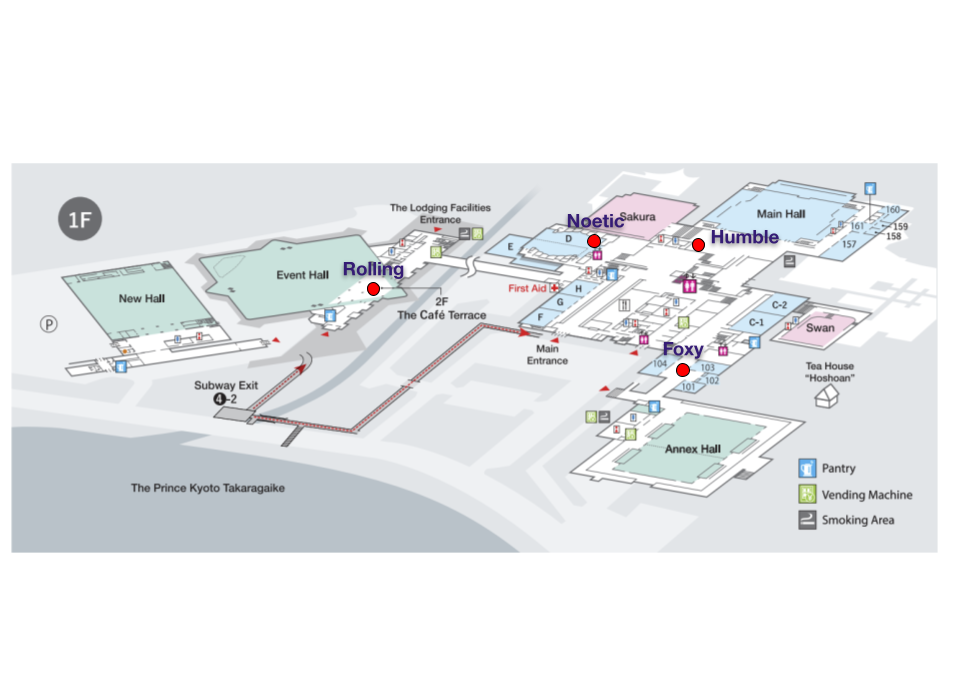
Want to propose a birds of a feather session? Please add your topic area in the spread sheet and follow it up with a post on ROS Discourse. You may have to refresh the page to see your changes. Issues with spreadsheet? Contact: roscon-2022-ec@openrobotics.org
Lightning Talks
On the first full day of ROSCon, October 20th, through the morning coffee break (~11:10 AM Kyoto Time) we will provide a form to submit your name, talk title, and optionally slides or a video for your lightning talk. Slides are not required, and there are no particular format requirements other than a six slide maximum. If you choose to use slides or video they must work on the coordinator’s laptop. We recommend you use common portable formats (e.g. PDFs, Google Slides, or PowerPoint). Videos are also acceptable but they must be less than two minutes, and preferably less than ninety seconds. We cannot guarantee the audio from your video will work correctly. Videos not hosted on Vimeo or Youtube must be less than 100MB in size. Given our time constraints, we would recommend against trying to do a live demo. If your lightning talk violates any of the constraints listed above it will be removed from the lottery.
Lightning talks will be reviewed and then selected via a lottery. Approximately after lunch on the first day of ROSCon the selected lightning talks will be announced on the ROSCon website and via e-mail.
Finally, and we can not stress this enough, KEEP👏IT👏SHORT👏. You will have exactly two minutes and a maximum of six slides. We recommend the following format:
- Who you are
- What you’re working on
- Your cool thing / idea / project
- Where to find more information (we suggest using a link shortener / QR code)
- Make it fun!
- KEEP IT SHORT
Lightning Talk Process
Each year that we’ve had lightning talks we’ve ended up with more talks than we have had time to present. We’ve followed various techniques to fairly allocate speaking slots, including a first come first served policy and random selection.
- The committee will post a link to a web form to sign up on-site at the beginning of the first day’s remarks.
- The link will also be posted at the registration desk.
- Submissions will be allowed until the end of the first Coffee Break (~11:10 AM Kyoto Time, October 20th, 2022).
- The Organizing Committee will review the submissions and then both day’s talks will be selected at random and announced at the beginning of lunch on the first day.
- If you are selected you will be contacted by the committee.
- During the lightning talk session your slides will be preloaded on a single laptop. Please be ready to talk in order.
Organizers
Organizing Committee
General Chair
Brian Gerkey (Open Robotics)
General Co-Chairs
Ryan Gariepy (Clearpath Robotics)
Tully Foote (Open Robotics)
Communications Chair
Kat Scott (Open Robotics)
Diversity Co-Chairs
Michael Carroll (Open Robotics)
Toffee Albina (Toyota Research Institute)
Finance Chair
Vanessa Yamzon Orsi (Open Robotics)
Local Arrangements Co-Chairs
Dražen Brščić (Kyoto University)
Hideki Takase (University of Tokyo)
Program Co-Chairs
Martin Pecka (Czech Technical University in Prague)
Tomoya Fujita (Sony Corporation of America)
ROSCon 2022 Diversity Scholarships
As previously announced, we are putting on ROSCon 2022 because we believe that it’s vital for our community to have a chance to connect with each other, and more importantly, because we believe that we can host the event safely. We’re working with local officials and experts to ensure that we follow the best available public health guidance. We are anticipating that protective measures such as distancing and masks may be required, and other modifications may be in effect. Further changes may be required, and we promise to be transparent and forthcoming along the way with all of our sponsors and attendees. This year will also have a live stream to accommodate those who would prefer, or are required, to remain at home.
The ROSCon 2022 organizing committee aims for ROSCon to represent the entire ROS community, which is diverse and global. In addition to promoting technology that is open source, we strive to ensure that our community is as open and accessible as possible. Inclusion and diversity benefit the ROS ecosystem as a whole.
Whoever you are, whatever you do, and wherever you do it, if you’re interested in ROS, then we want you to join us at ROSCon. To help reduce financial barriers to conference attendance, the ROSCon organizing committee is offering a number of scholarships to members of traditionally underrepresented groups in the robotics community. Thanks to the support of the program’s sponsors, each scholarship includes one complimentary conference registration and three nights’ accommodation shared with another recipient*. Limited travel support is available for participants whose travel to the conference would otherwise be infeasible**. Please note that all other expenses (including any visa requirements) will be the responsibility of the participant.
*To maximize the impact of scholarship funds, in previous years, scholarship recipients were asked to share a room with another recipient. Under special circumstances alternative arrangements can be accommodated. Due to health and safety circumstances in 2022, the situation may be different and will be updated when we have more information.
**Participants will be responsible for covering their travel expenses up front, as the travel support will be provided after the conference has been attended.
Eligibility
We invite applications from members of groups that have been traditionally underrepresented in the robotics community, including but not limited to: women, people in LGBTQIA+ communities, people with disabilities, people from racial and/or ethnic minorities in the robotics community, and people from developing nations who may not otherwise be able to attend ROSCon. Previous ROSCon Diversity Scholarship recipients are not eligible to re-apply.
We are proud to share the following feedback from past Diversity Scholars:
The ROSCon Diversity Scholarship Program provided me with an opportunity that would have been completely impossible without it. I was able to attend my first robotics conference and feel empowered to keep working to try and make a positive impact on this community. Also, it was very encouraging to see so many companies stepping up to promote and enable diversity within their companies and the robotics community. Thank you! ROSCon 2017 scholarship participant
ROSCon has been an incredible experience. It is really encouraging to see that everyone in the robotics community is really welcoming and willing to share their expertise. I learned a lot and I met incredible people. This experience inspired and motivated me to contribute more to the robotics community and make a positive impact. ROSCon 2018 scholarship participant
We also have a blog post of the 2017 Diversity Program.
Sponsorship
The ROSCon Diversity Scholarship is made possible thanks to sponsor organizations from the ROS community.
If your organization is interested in getting involved in the Diversity Program, please contact us at roscon-2022-oc@openrobotics.org
How to Apply
To apply, fill out this form by June 13, 2022, describing how you are involved with ROS and the robotics community, and what you hope to get out of attending ROSCon. Scholarships will be awarded based on a combination of need and impact. Every applicant will be notified of the outcome of their application. Questions, comments, and concerns can be discussed in this ROS Discourse post.
Diversity scholarship recipients will be notified August 15th, 2022!
Travel Restrictions to Japan
Please note that as of Wednesday, March 23, 2022 some travelers may be prohibited from entering Japan. Please check the Ministry of Foreign Affairs of Japan Consular Services page to keep track of the latest border measures. We encourage everyone to submit a scholarship application and as the conference approaches and the travel situation is updated we will provide further information. This year will also have a live stream to accommodate those who would prefer, or are required, to remain at home.
Past Events
ROSCon has been held annually since 2012. If you’d like to know more we have archives of all the past programs with recordings of the talks and most of the slides. The sites can be found at the locations below.
- ROS World 2021
- ROS World 2020
- ROSCon 2019 Macau
- ROSCon 2018 Madrid, Spain
- ROSCon 2017 Vancouver, Canada
- ROSCon 2016 Seoul, Korea
- ROSCon 2015 Hamburg, Germany
- ROSCon 2014 Chicago, USA
- ROSCon 2013 Stuttgart, Germany
- ROSCon 2012 St. Paul, USA
Code of Conduct
All attendees, speakers, sponsors and volunteers at our conference are required to agree with the following code of conduct. Organisers will enforce this code throughout the event. We expect cooperation from all participants to help ensure a safe environment for everybody.
The Quick Version
Our conference is dedicated to providing a harassment-free conference experience for everyone, regardless of gender, gender identity and expression, age, sexual orientation, disability, physical appearance, body size, race, ethnicity, religion (or lack thereof), or technology choices. We do not tolerate harassment of conference participants in any form. Sexual language and imagery is not appropriate for any conference venue, including talks, workshops, parties, Twitter and other online media. Conference participants violating these rules may be sanctioned or expelled from the conference without a refund at the discretion of the conference organizers.
Attendee Health and Safety
With regards to attendee health and safety during the ongoing COVID-19 pandemic, ROSCon will be following all applicable local public health guidelines in order to provide as safe an environment as possible when meeting in person for ROSCon 2022. This segment of the Code of Conduct may be revised as needed to reflect the latest guidance and is current as of 2/14/2022.
ROSCon encourages attendees to be fully vaccinated prior to arriving onsite at the conference. In addition, the organizers ask that you:
- Follow relevant guidance provided by the World Health Organization (WHO), or your local health authority.
- Adhere to government-issued travel restrictions and guidance issued by the region you will be traveling to and the region you are traveling from (including compliance required by airlines or other travel services).
- Evaluate your own health and that of people you are in close contact with; Contact the ROSCon organizers if you have concerns.
- Stay home if you feel sick and seek medical attention at any time if you feel unwell or are experiencing flu-like symptoms.
- Follow guidance from your local health authority for everyday preventive actions to help the spread of respiratory viruses. For more recommendations, see the WHO’s Covid-19 travel guidelines.
The Less Quick Version
Harassment includes offensive verbal comments related to gender, gender identity and expression, age, sexual orientation, disability, physical appearance, body size, race, ethnicity, religion, technology choices, sexual images in public spaces, deliberate intimidation, stalking, following, harassing photography or recording, sustained disruption of talks or other events, inappropriate physical contact, and unwelcome sexual attention.
Participants asked to stop any harassing behavior are expected to comply immediately.
Sponsors are also subject to the anti-harassment policy. In particular, sponsors should not use sexualised images, activities, or other material. Booth staff (including volunteers) should not use sexualized clothing/uniforms/costumes, or otherwise create a sexualised environment.
If a participant engages in harassing behavior, the conference organisers may take any action they deem appropriate, including warning the offender or expulsion from the conference with no refund.
If you are being harassed, notice that someone else is being harassed, or have any other concerns, please contact a member of conference staff immediately. Conference staff can be identified as they’ll be wearing badges as well as there will be staff at the registration desk.
Conference staff will be happy to help participants contact hotel/venue security or local law enforcement, provide escorts, or otherwise assist those experiencing harassment to feel safe for the duration of the conference. We value your attendance.
We expect participants to follow these rules at conference and workshop venues and conference-related social events.

